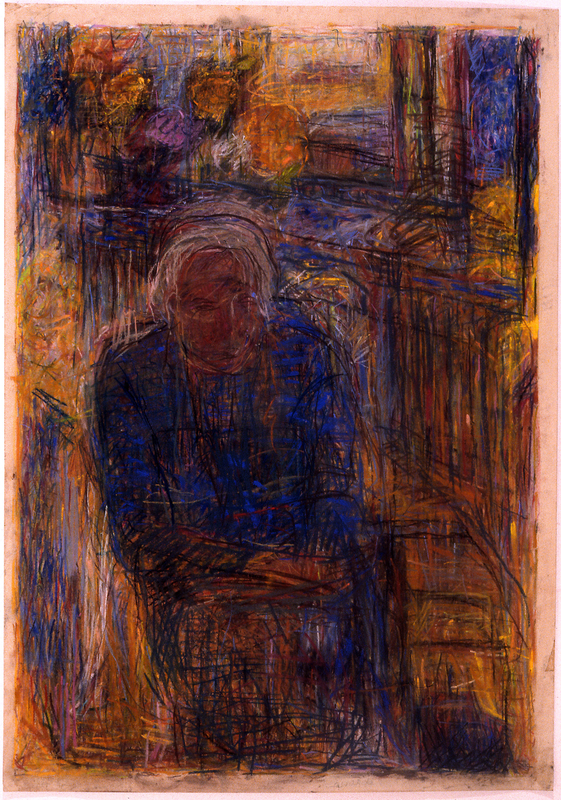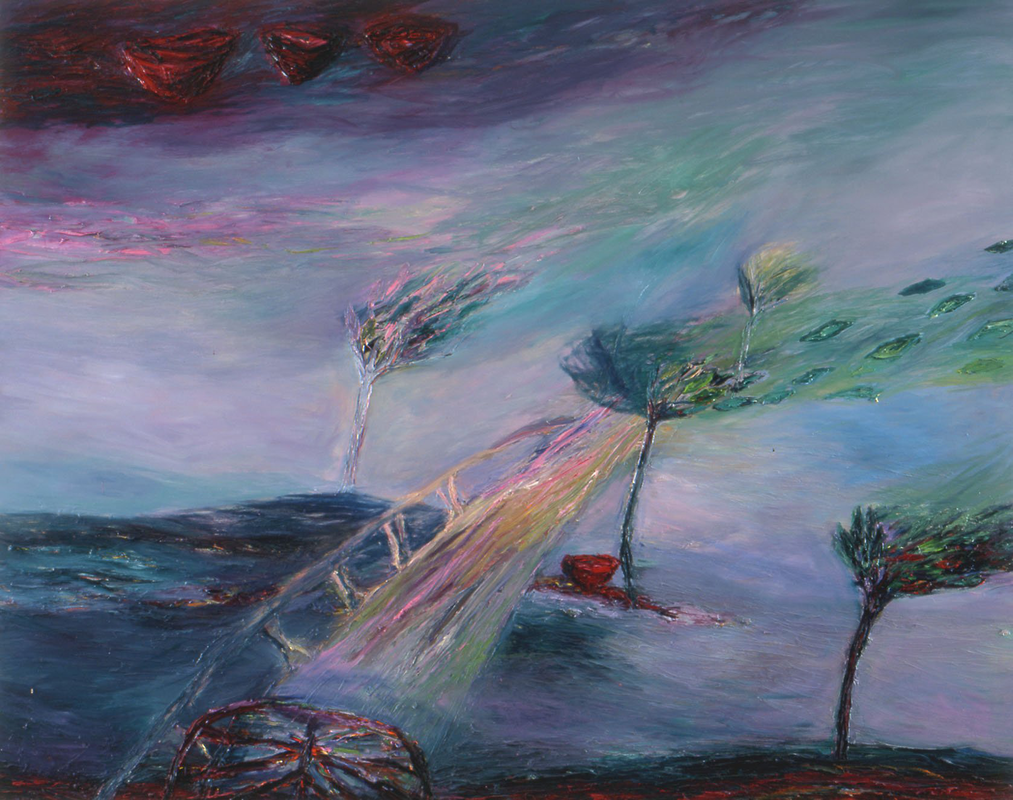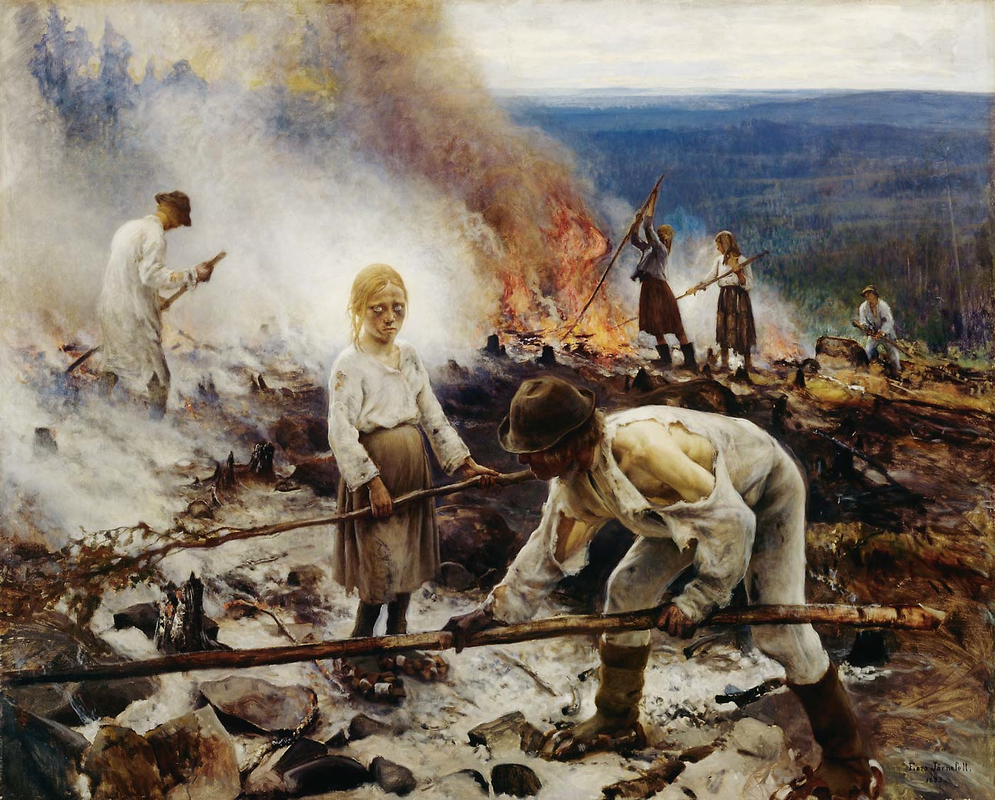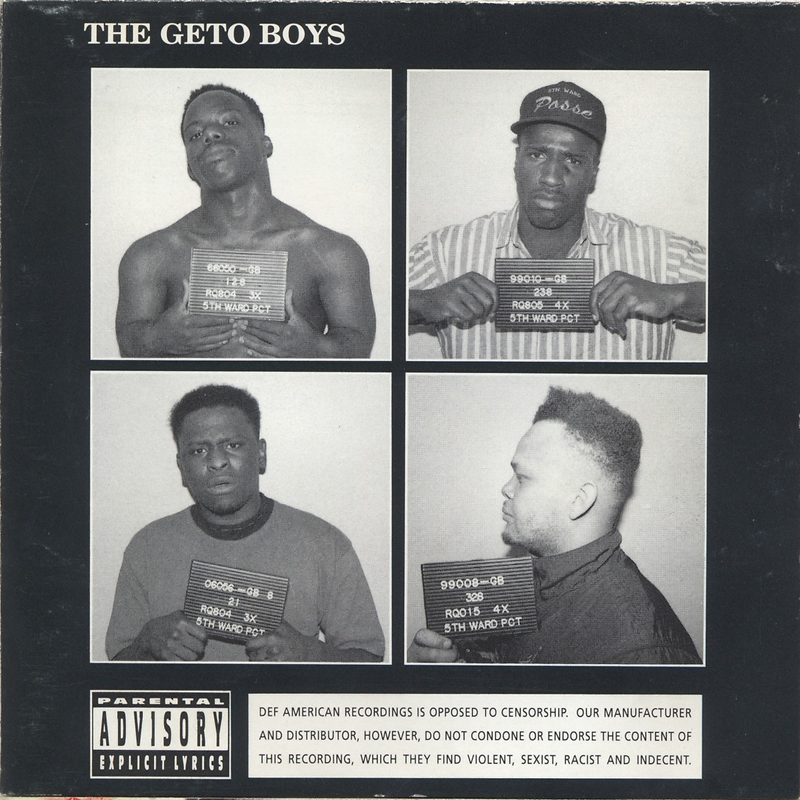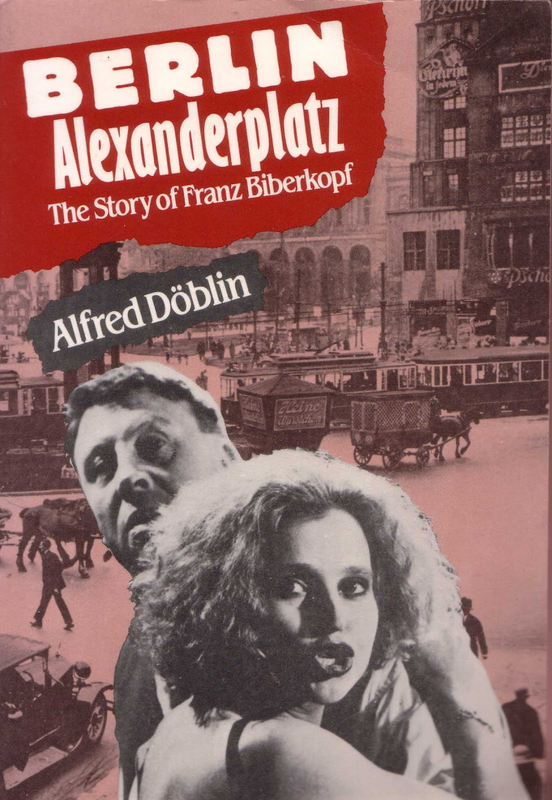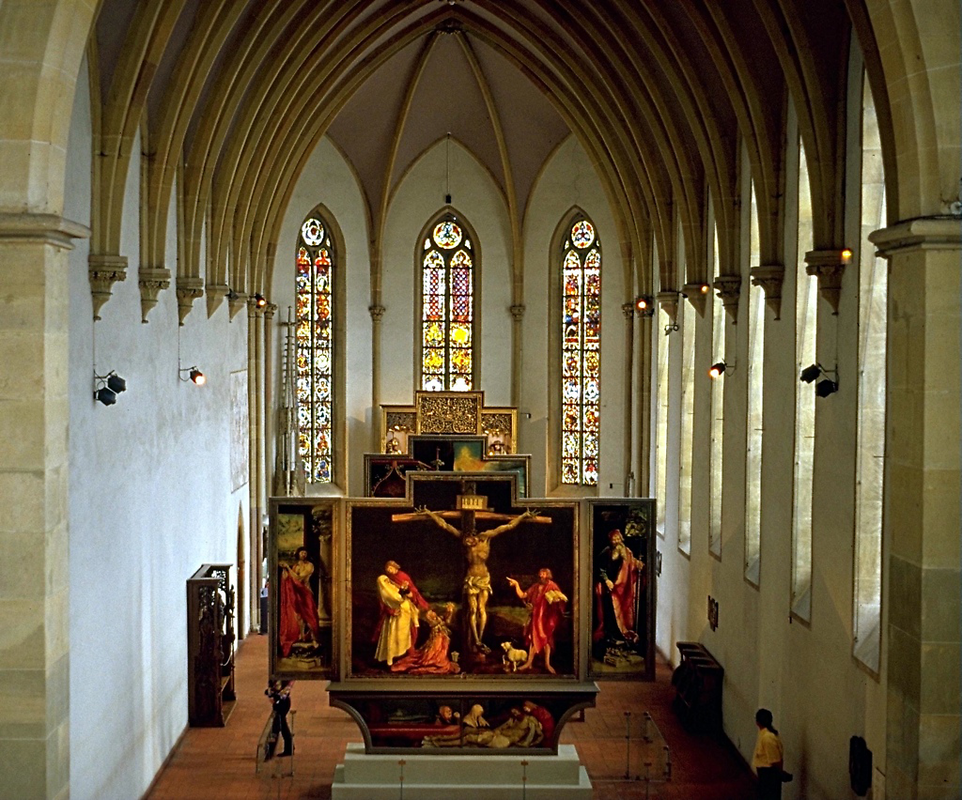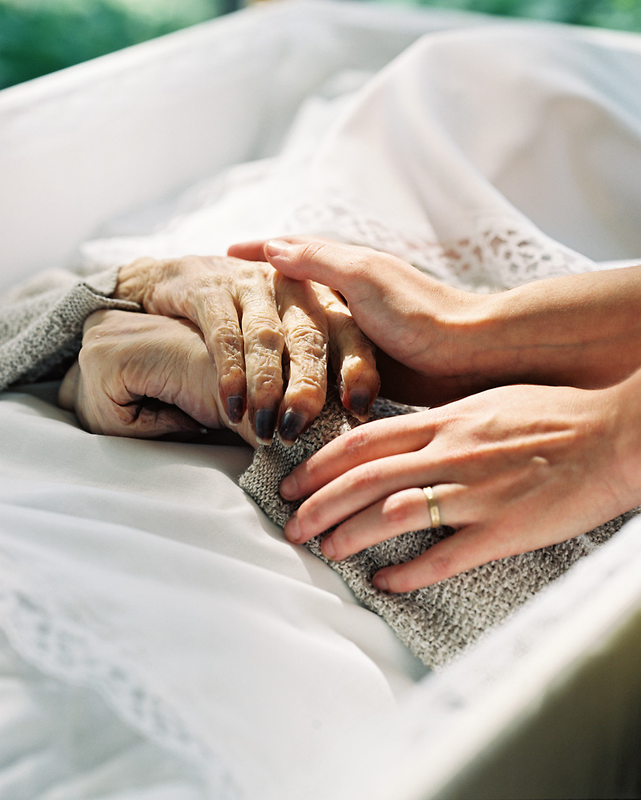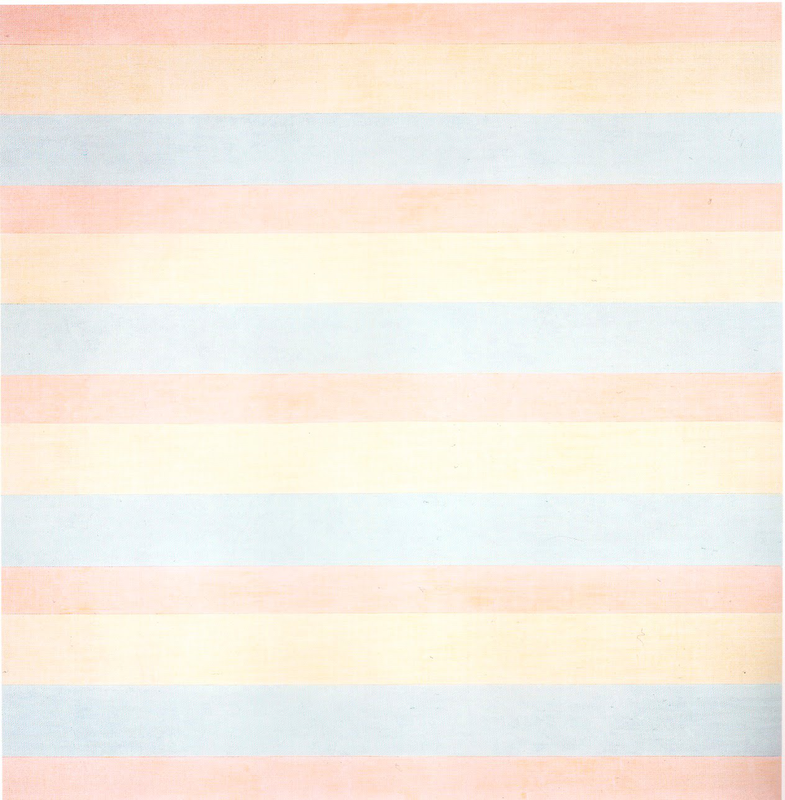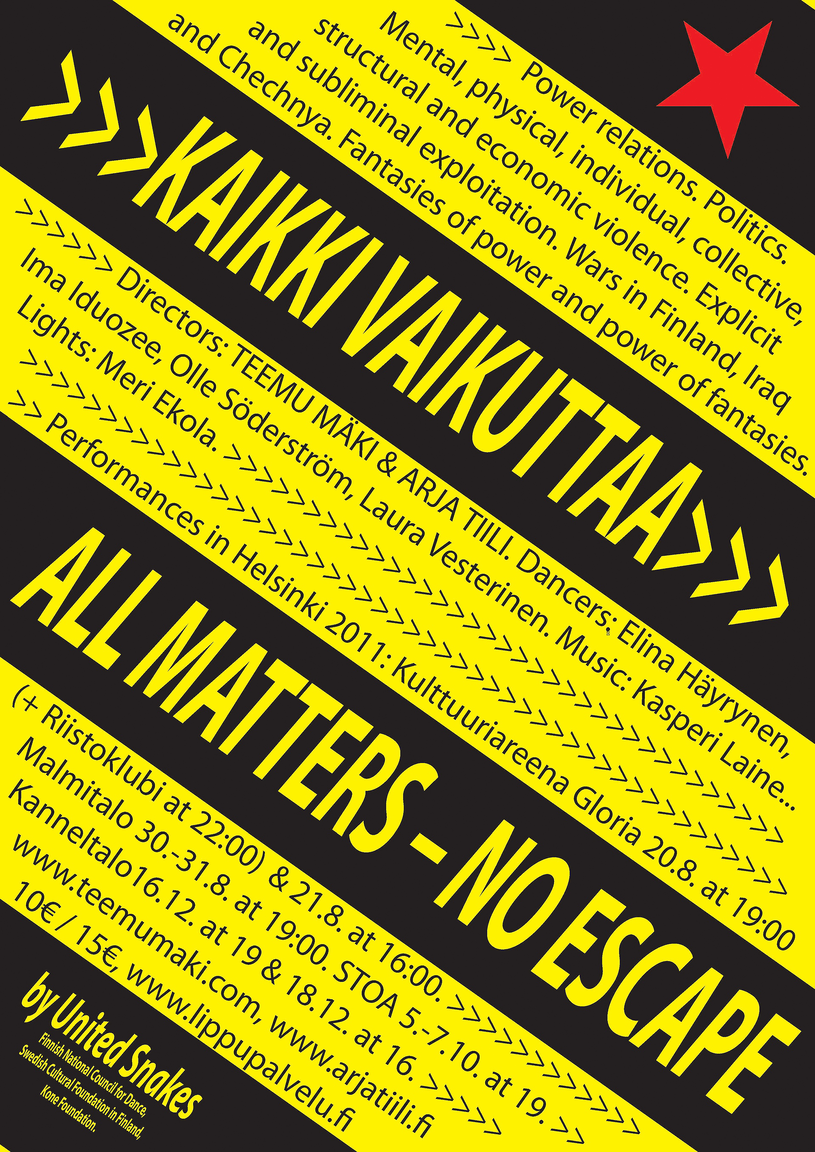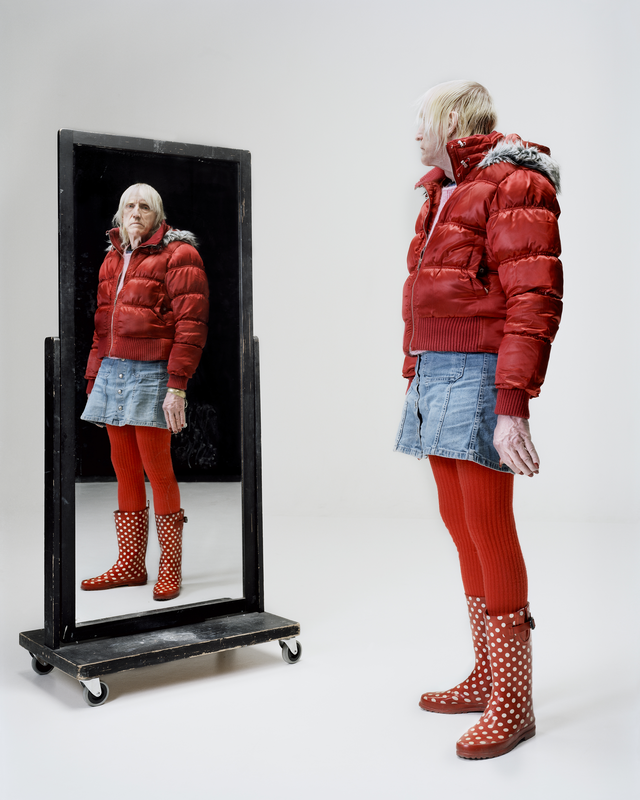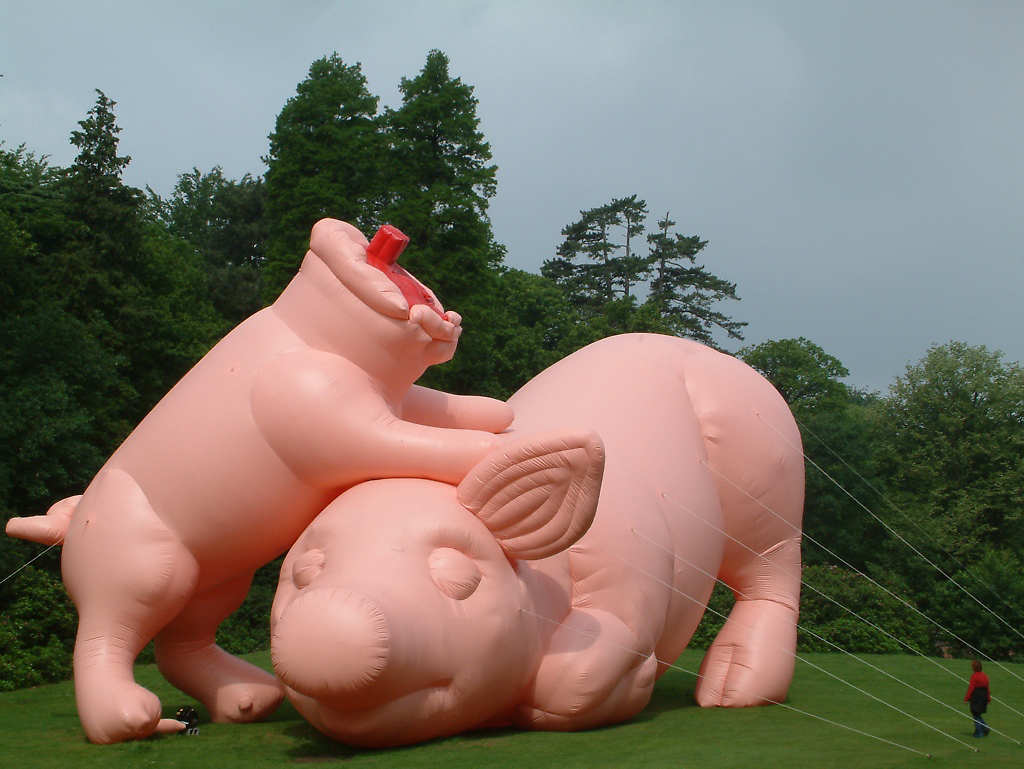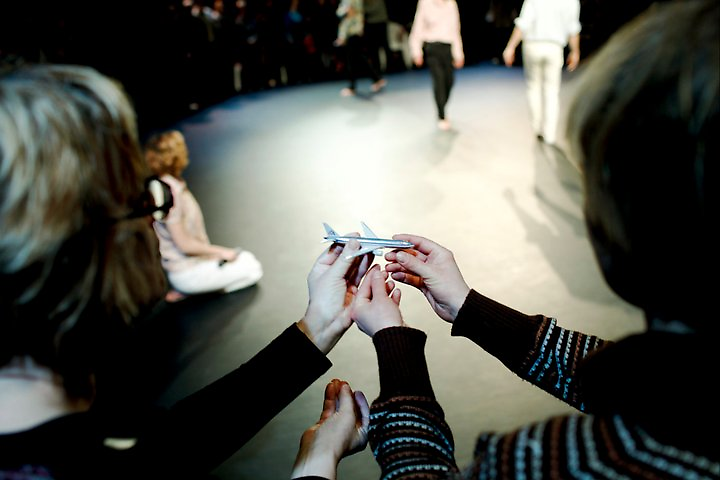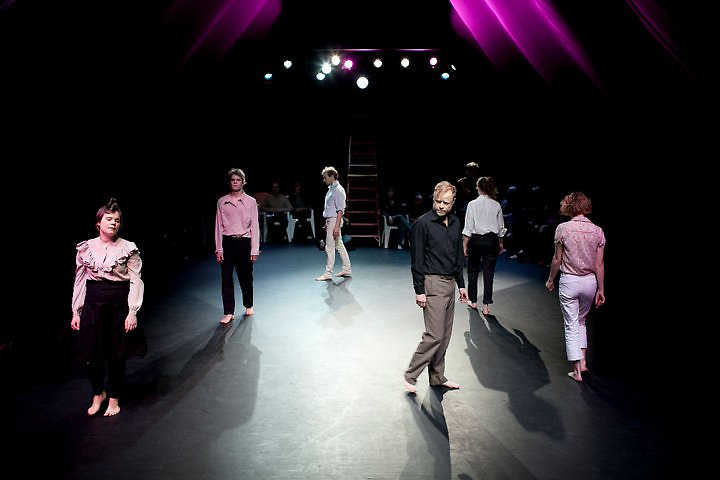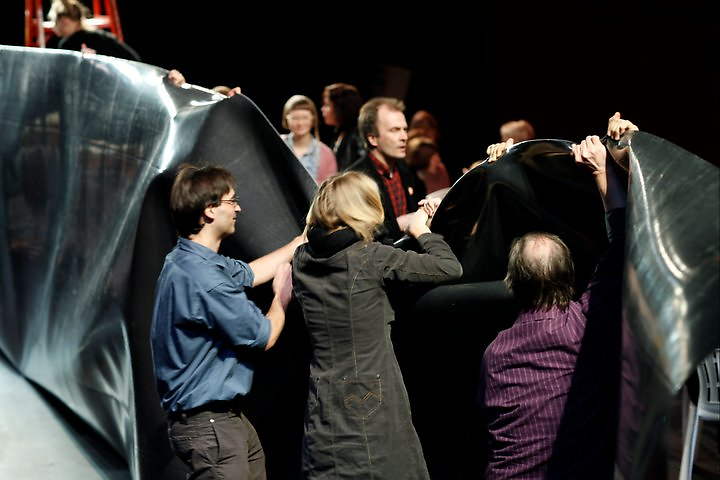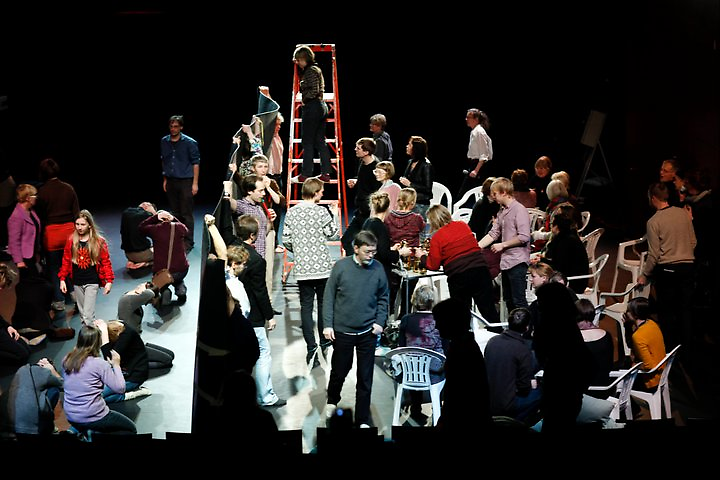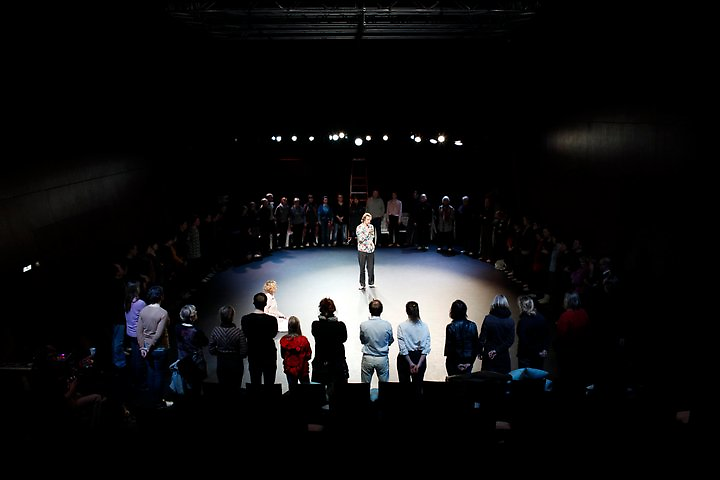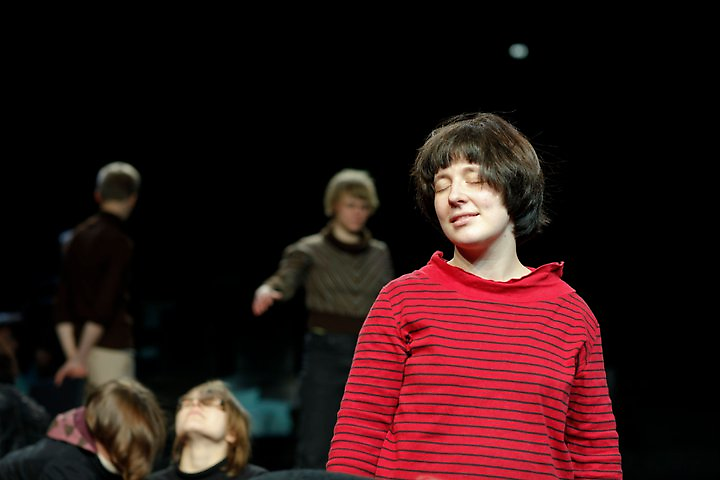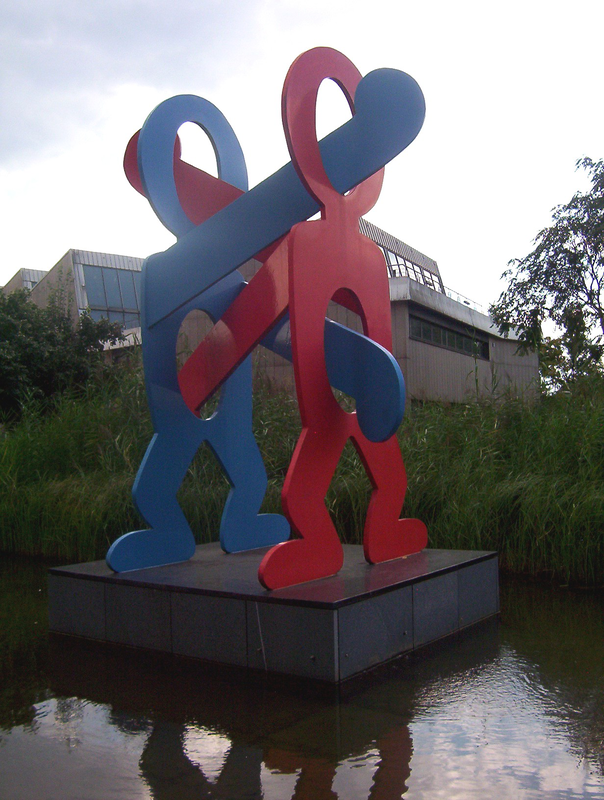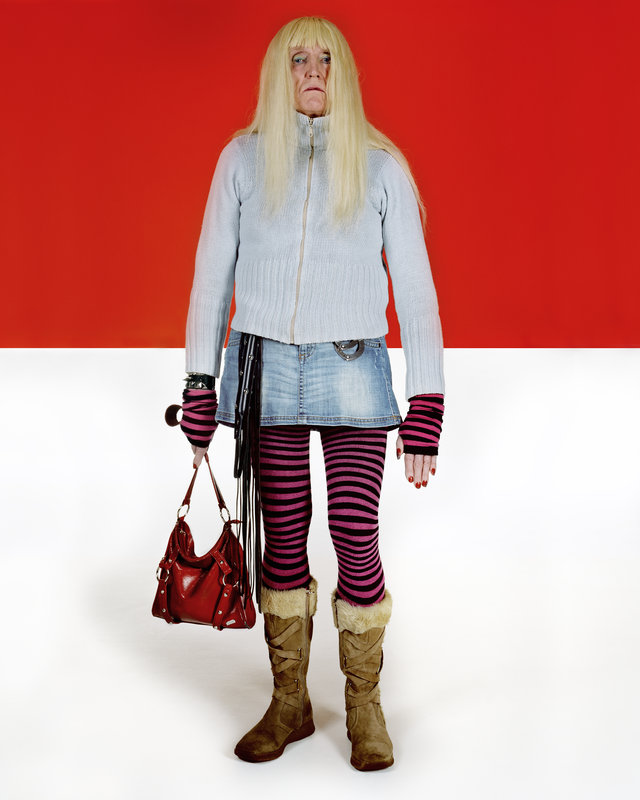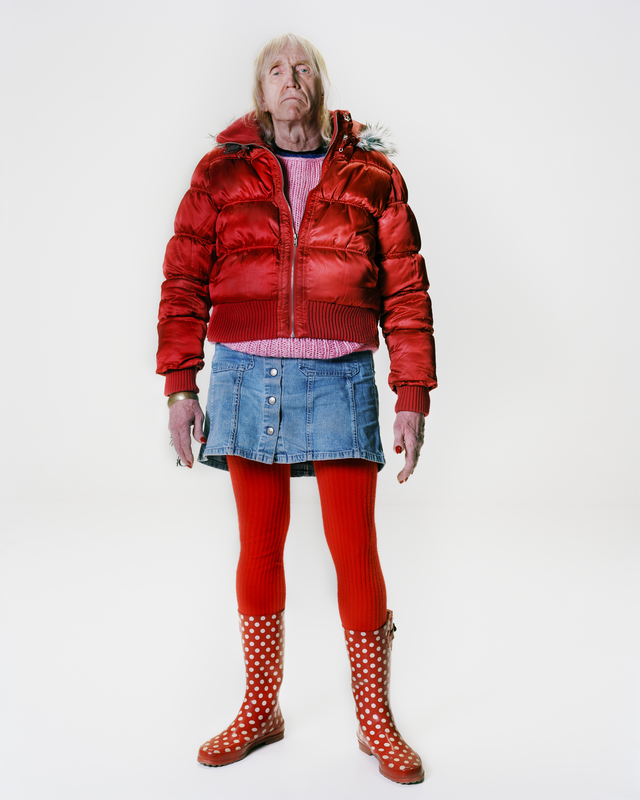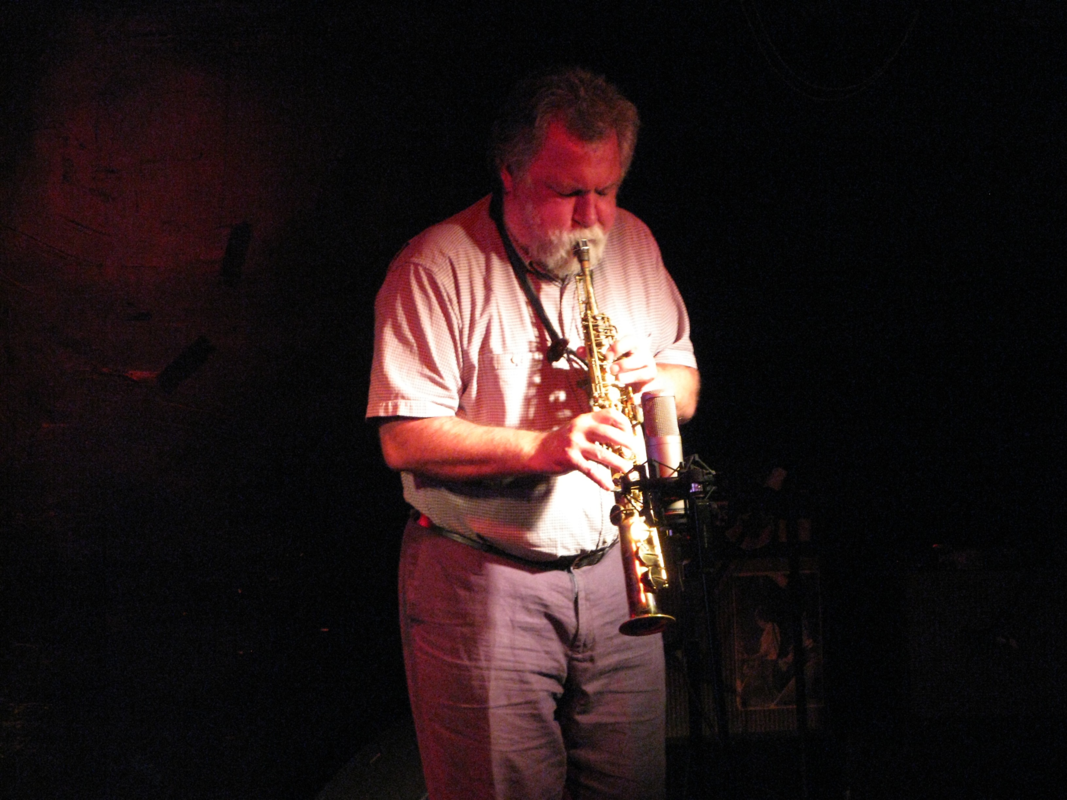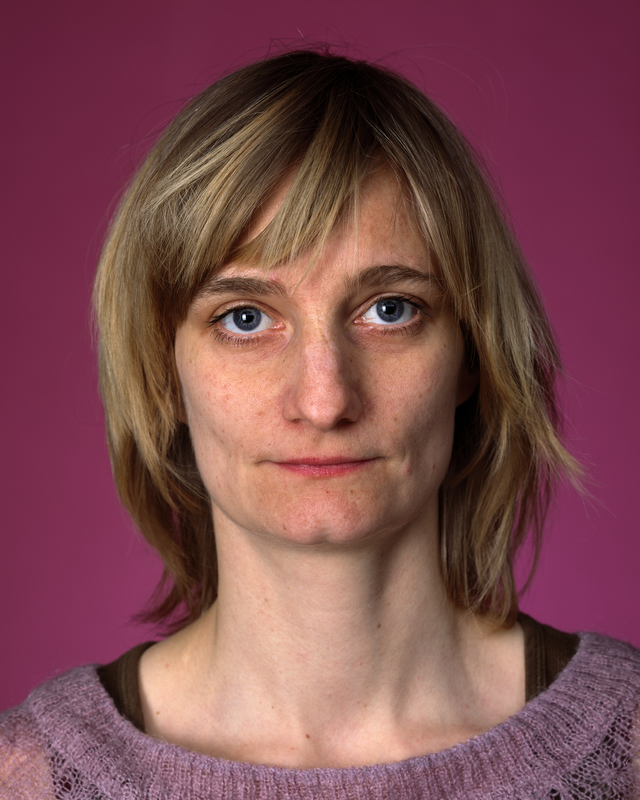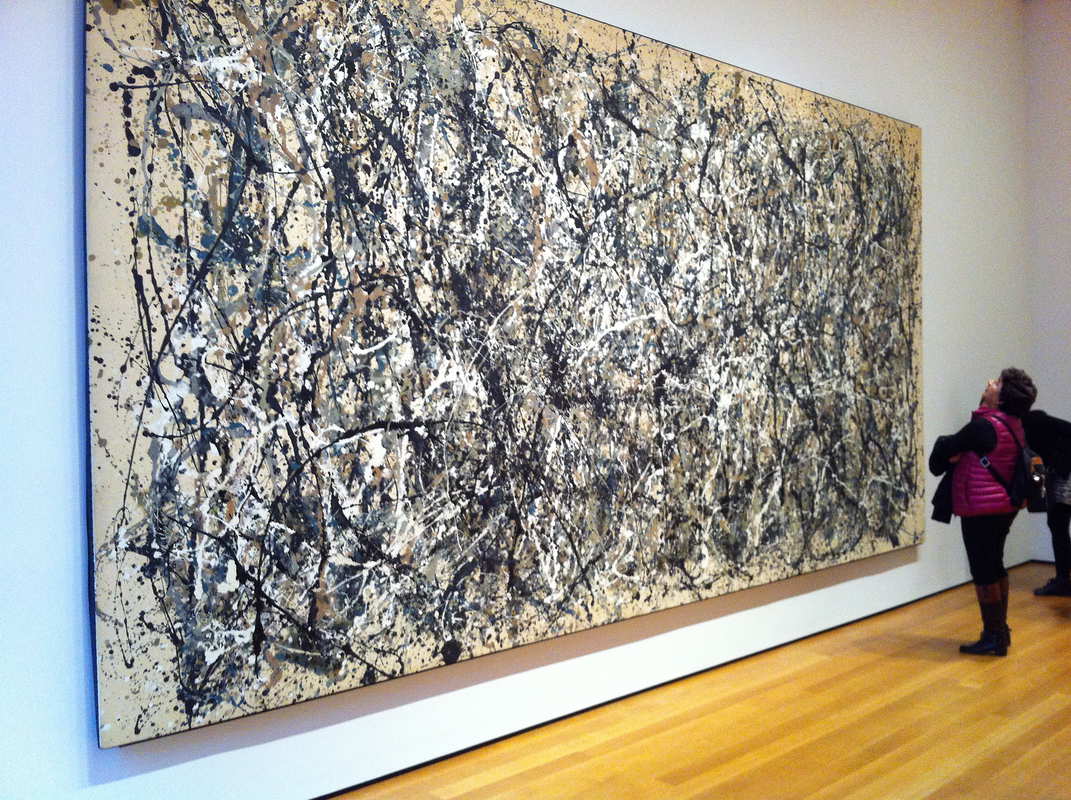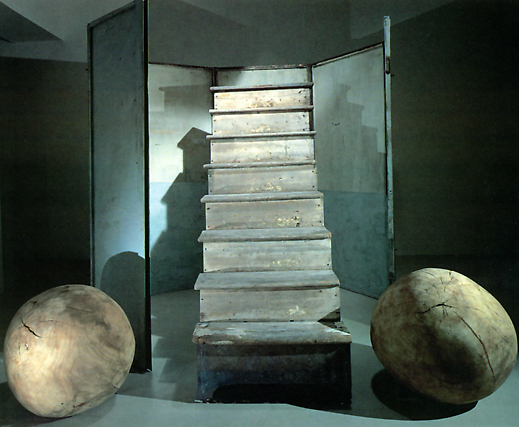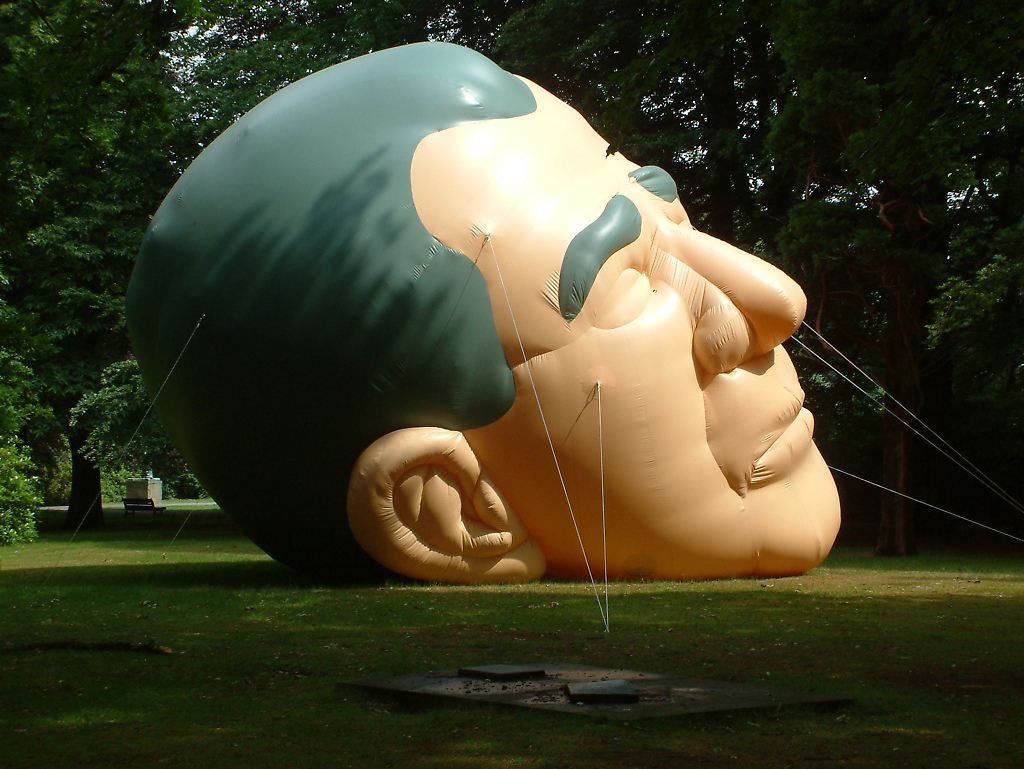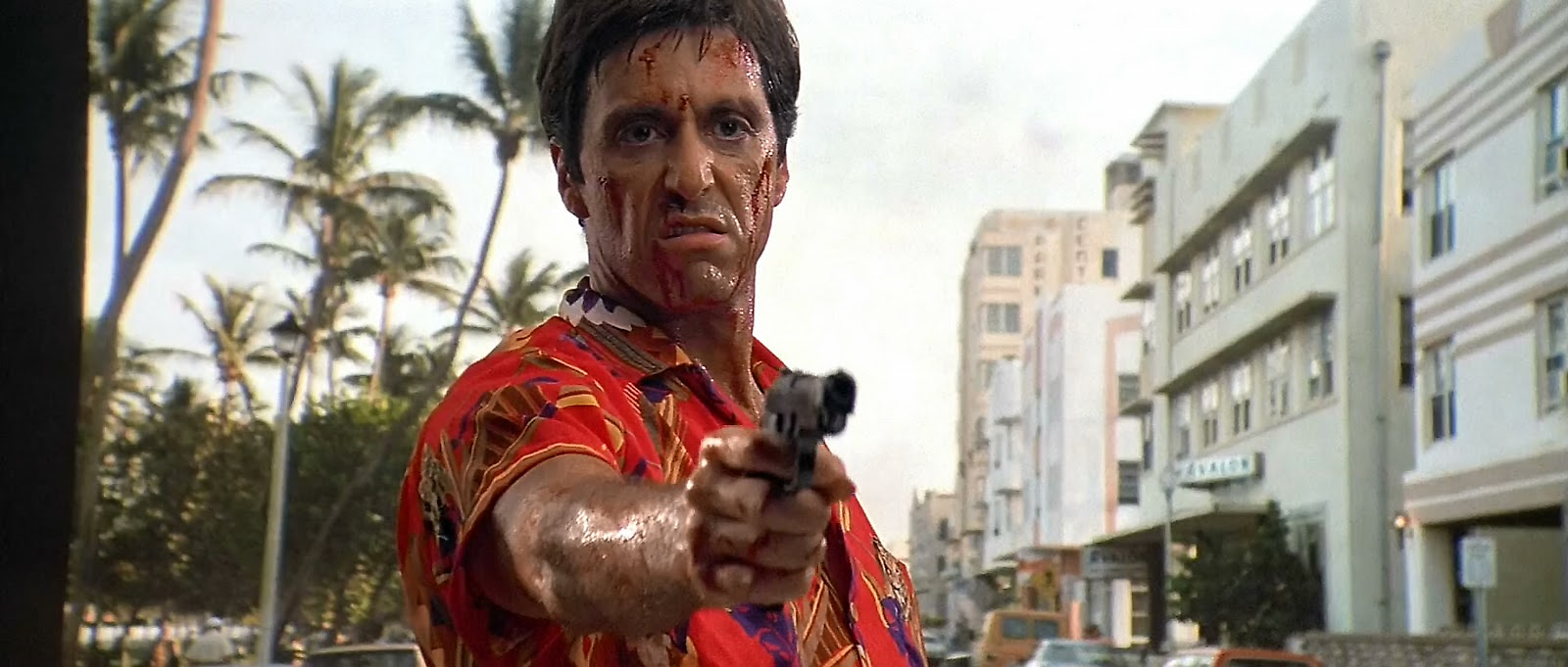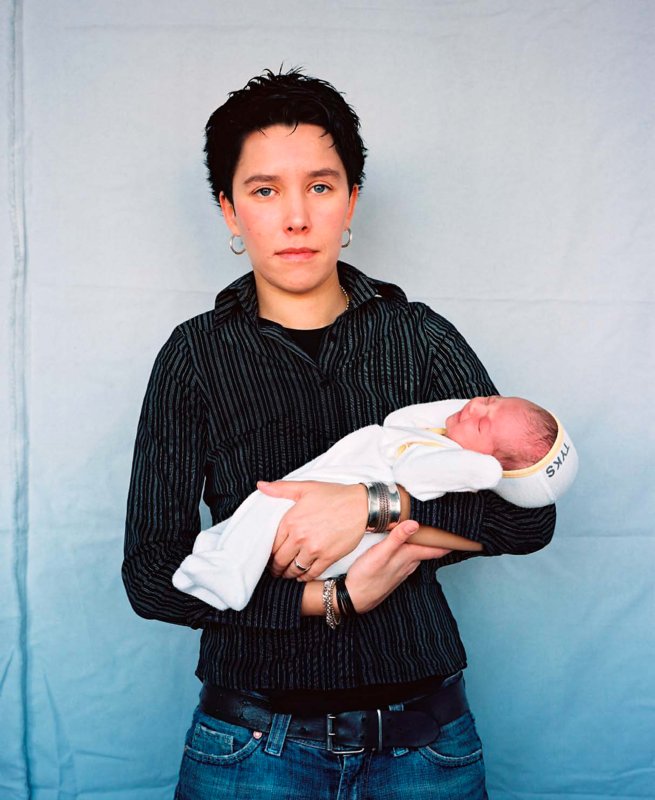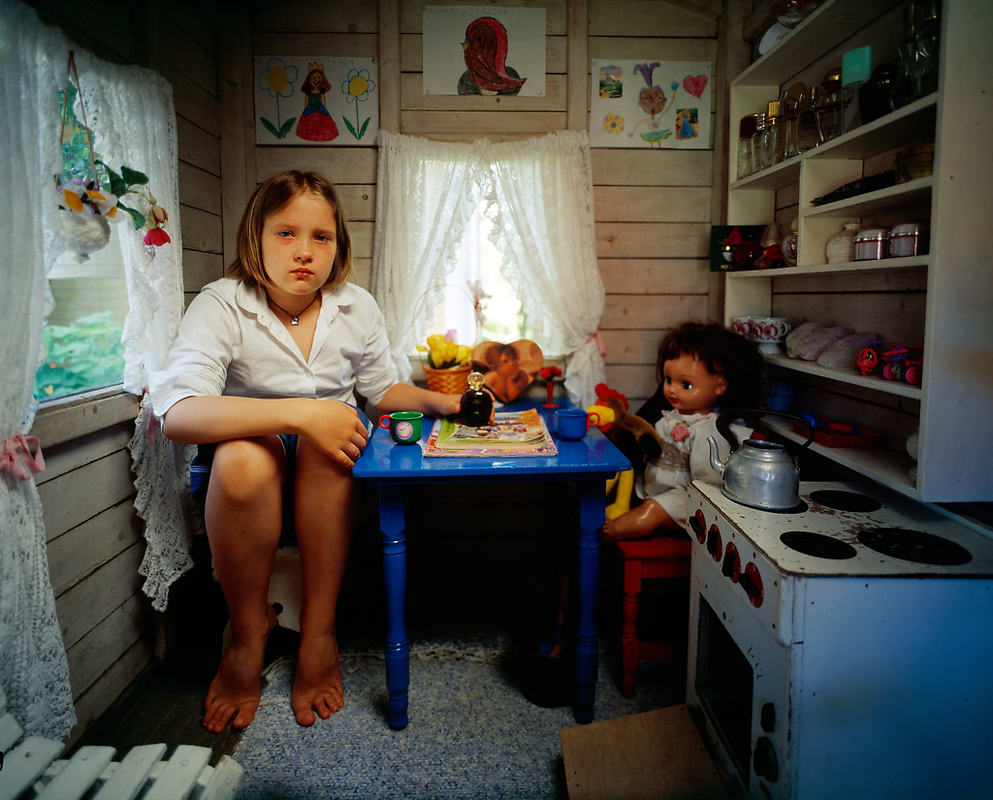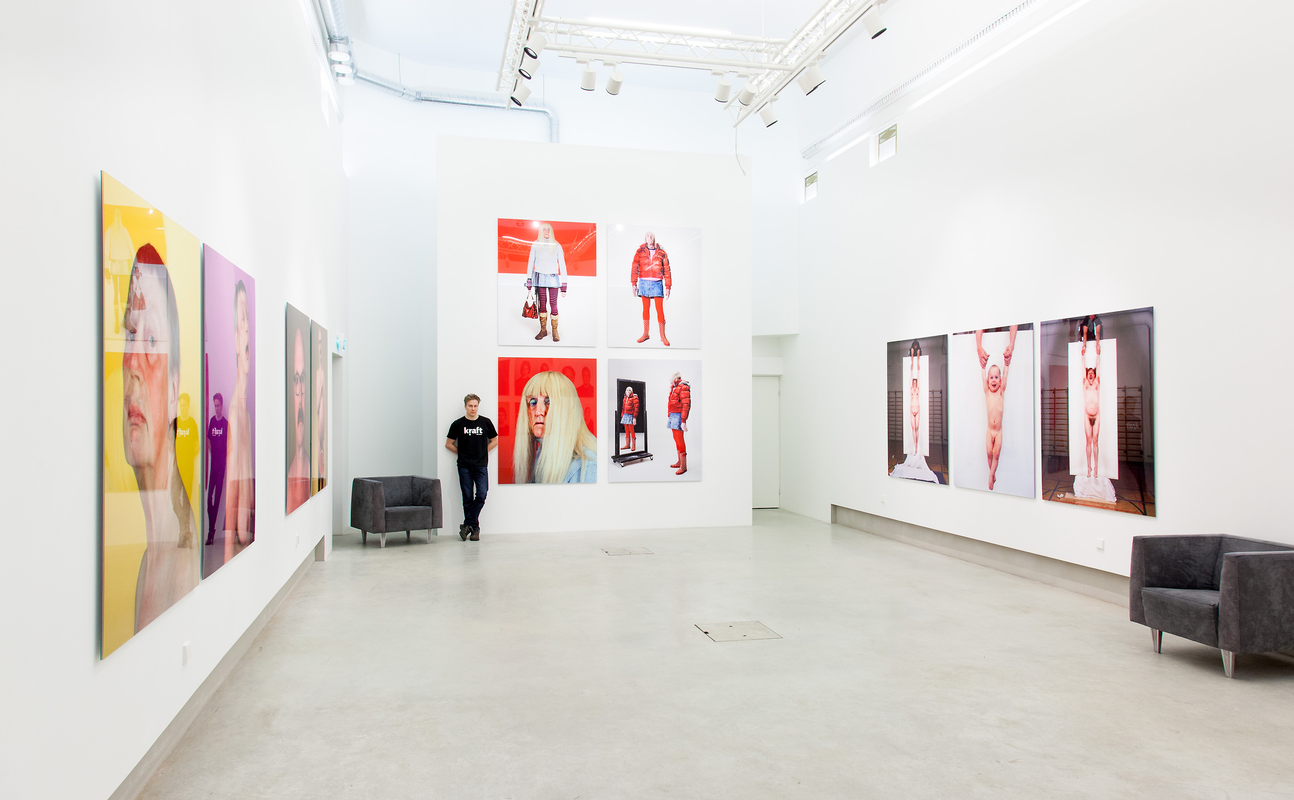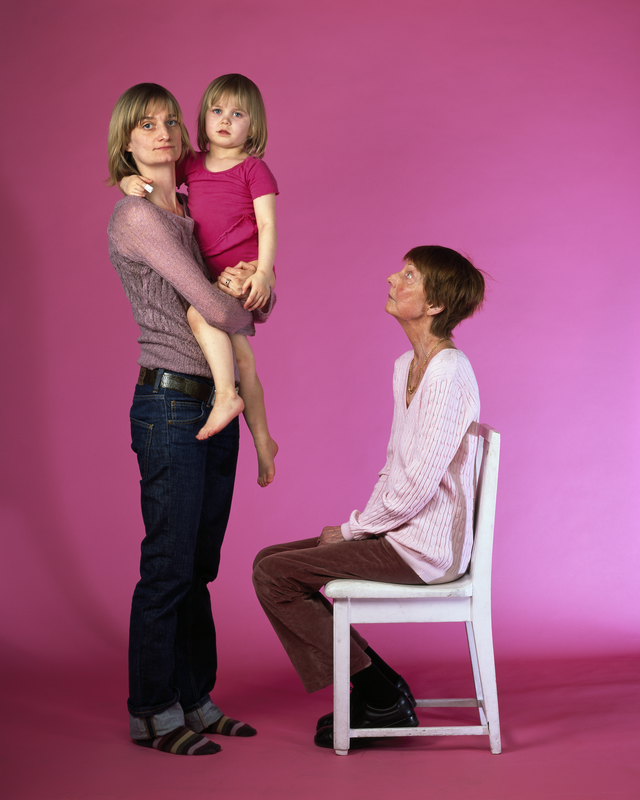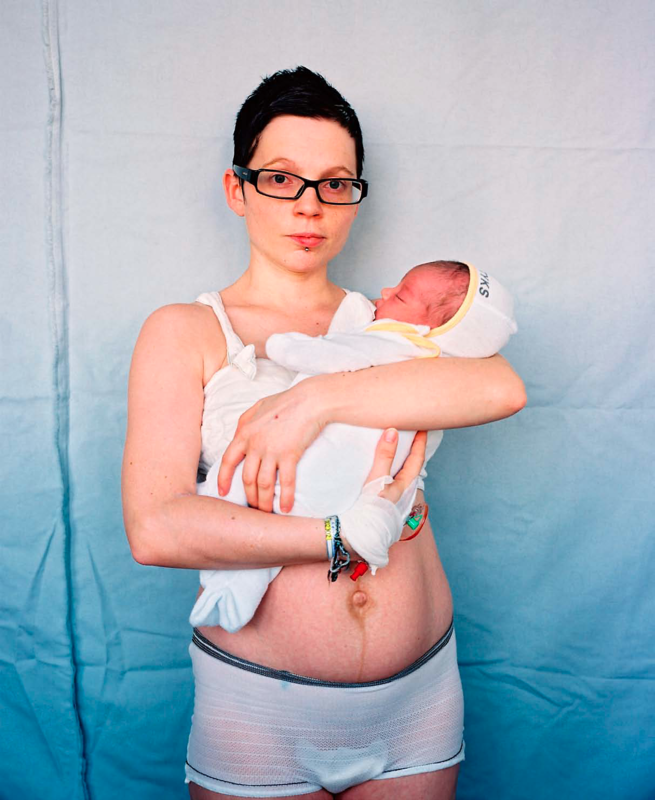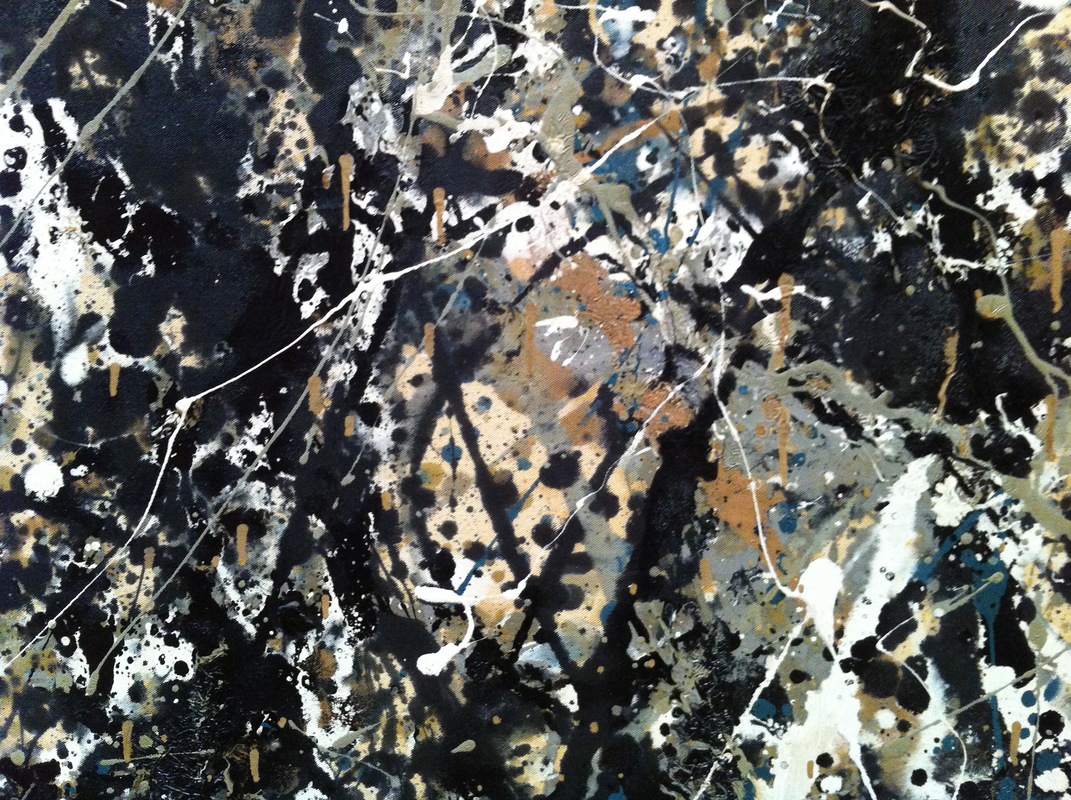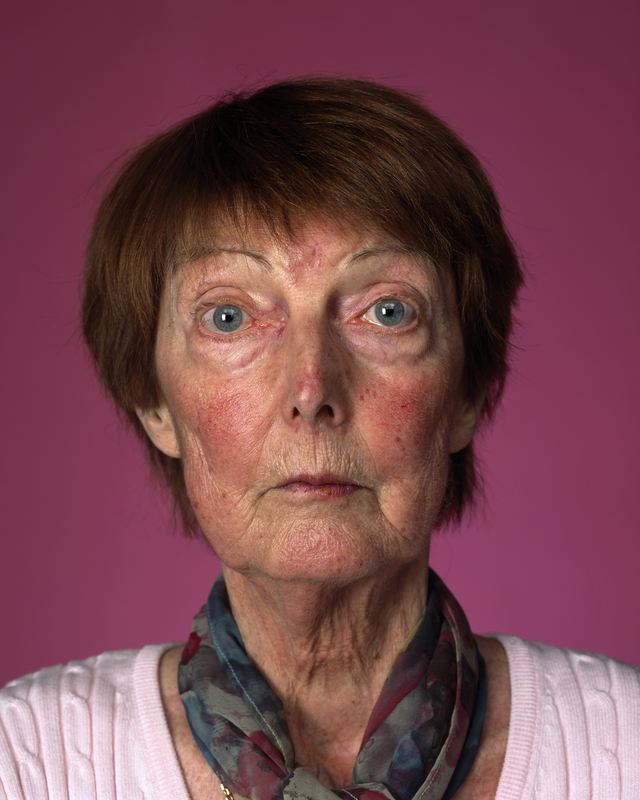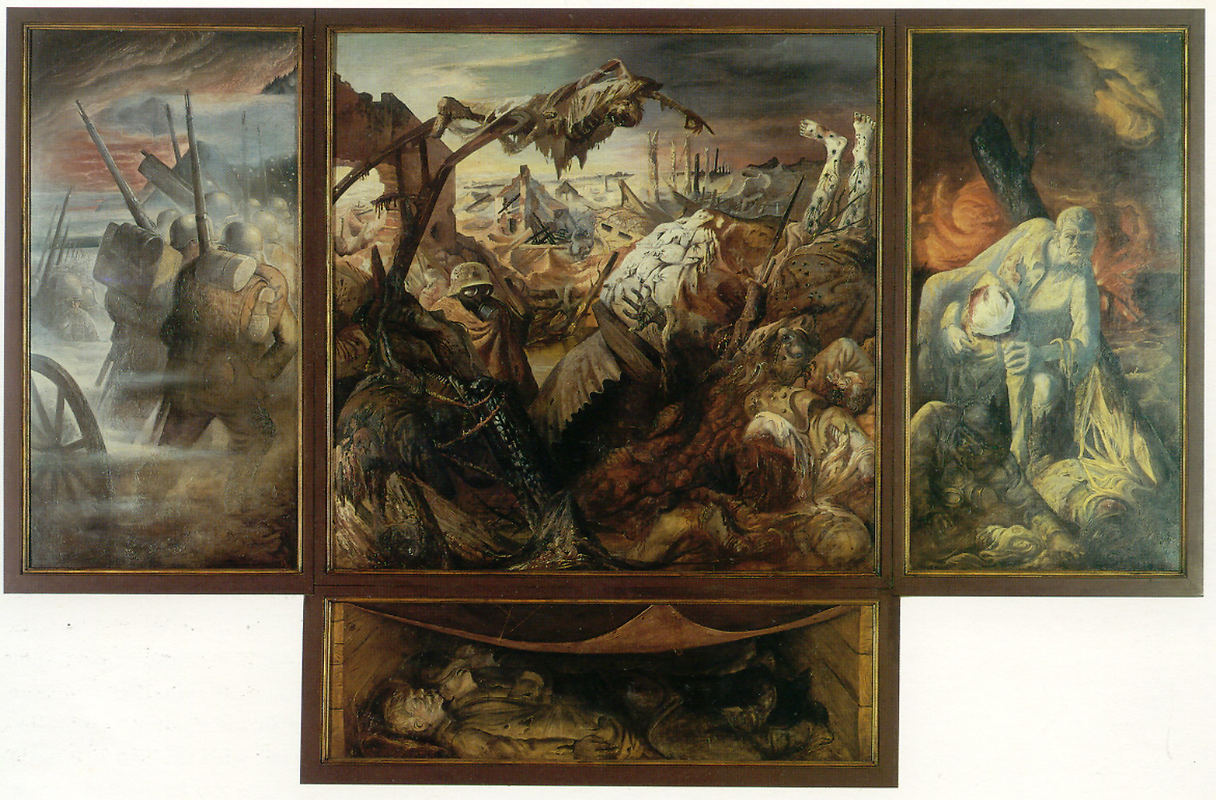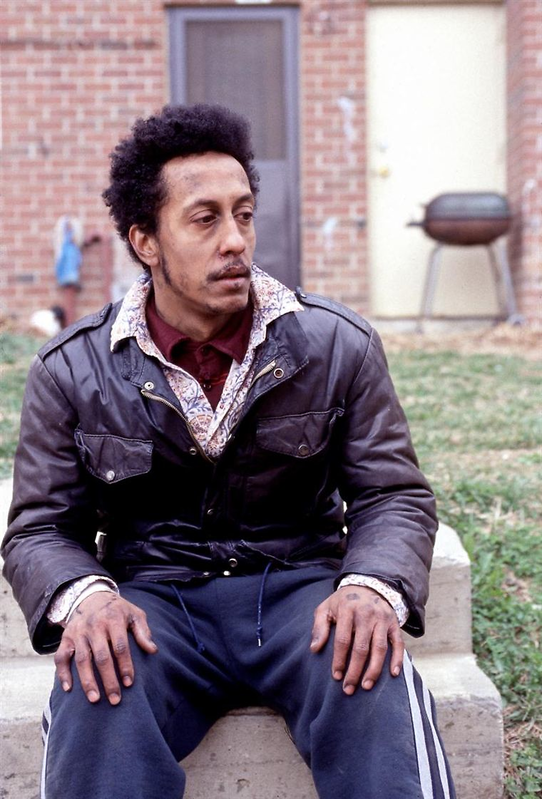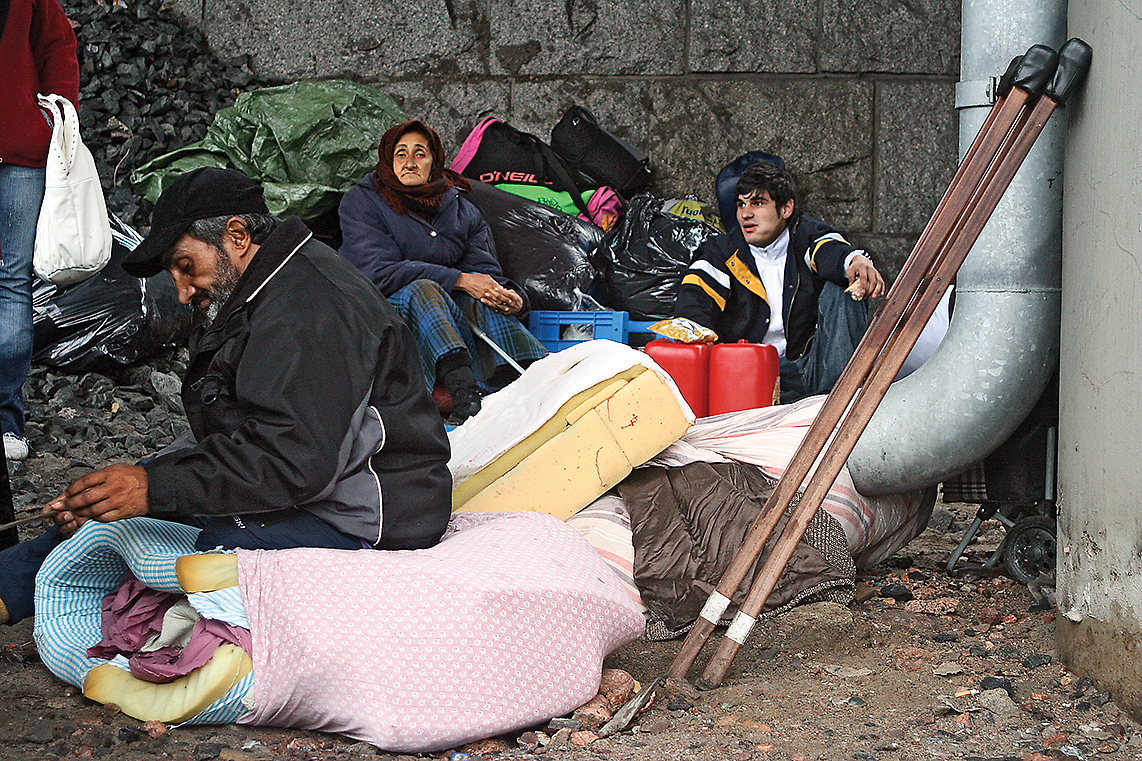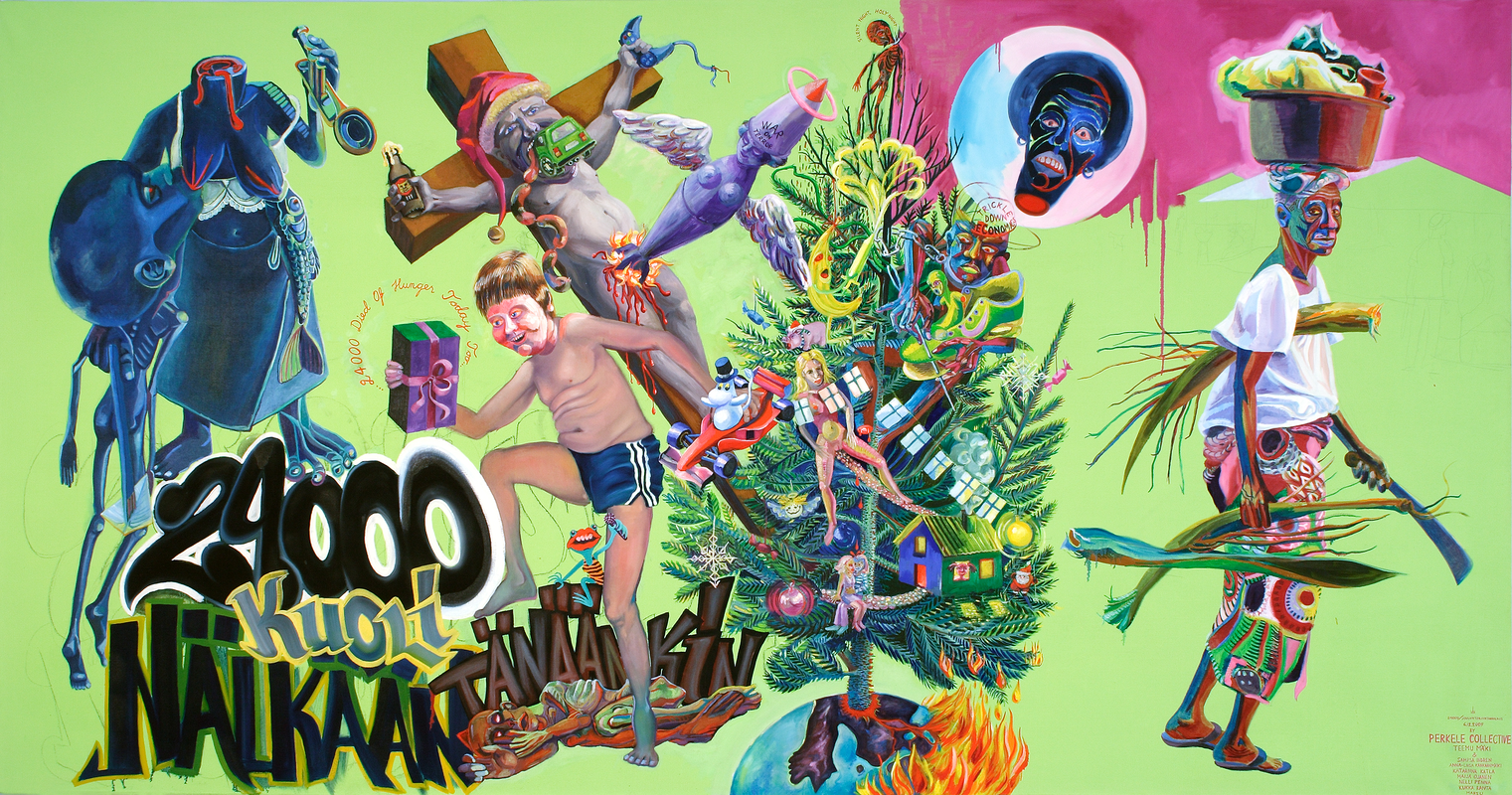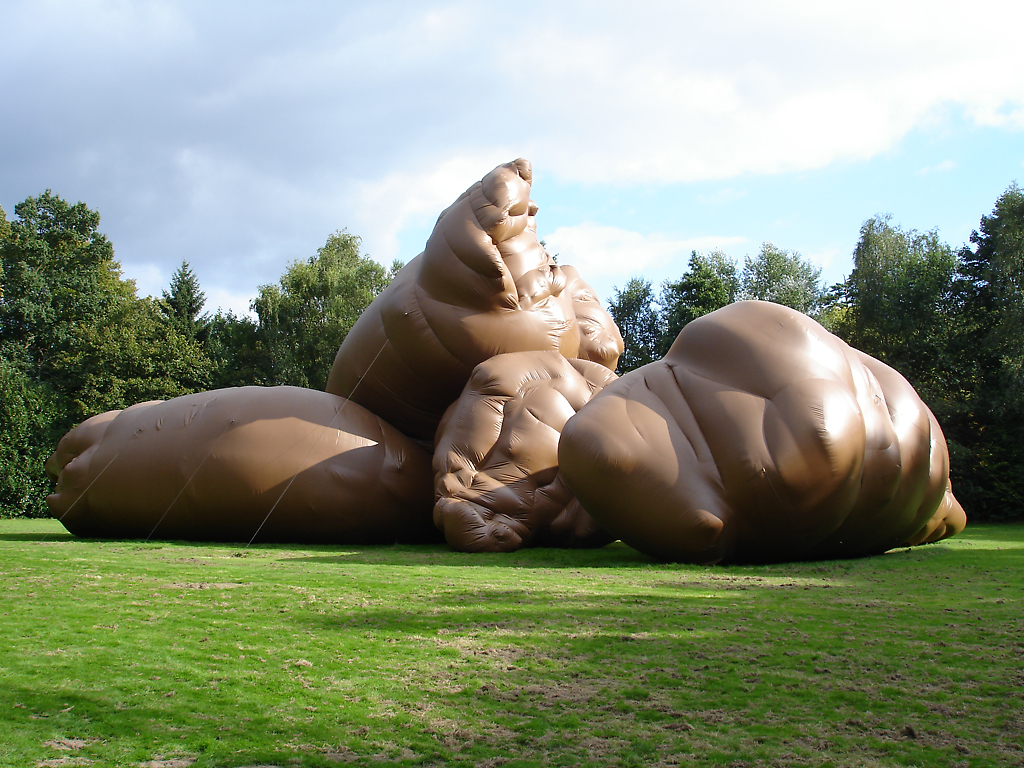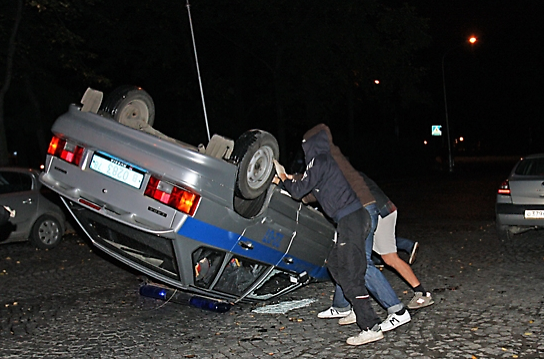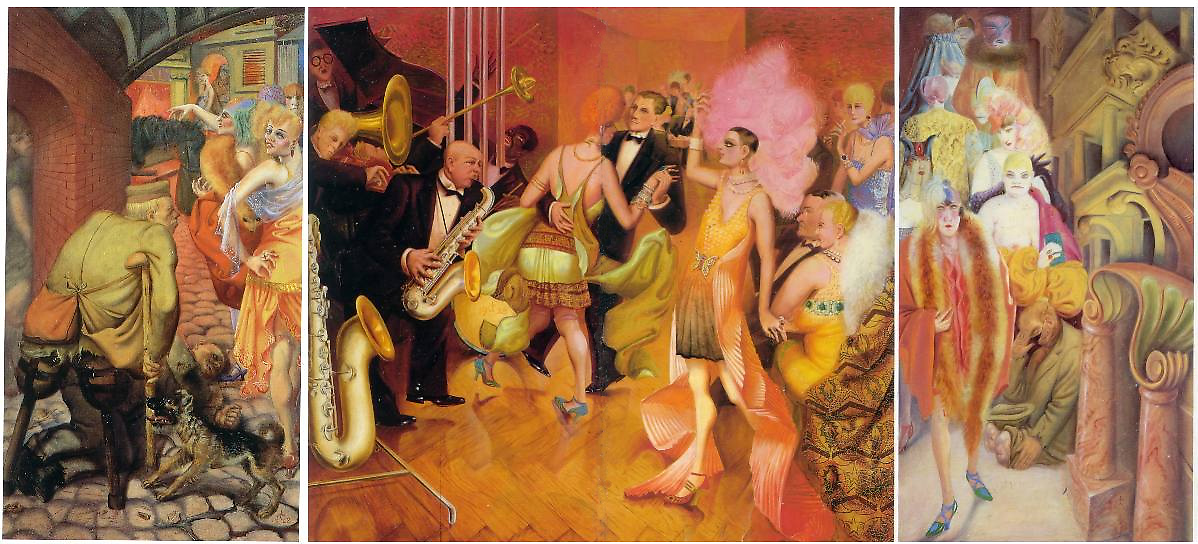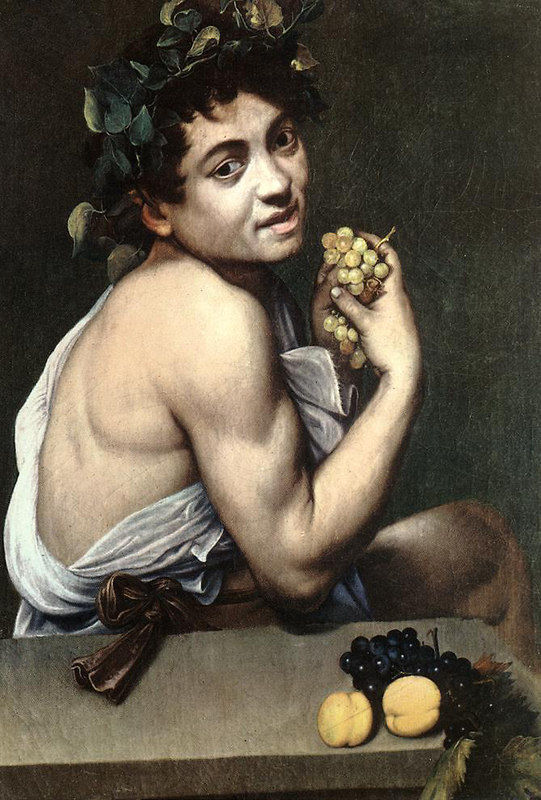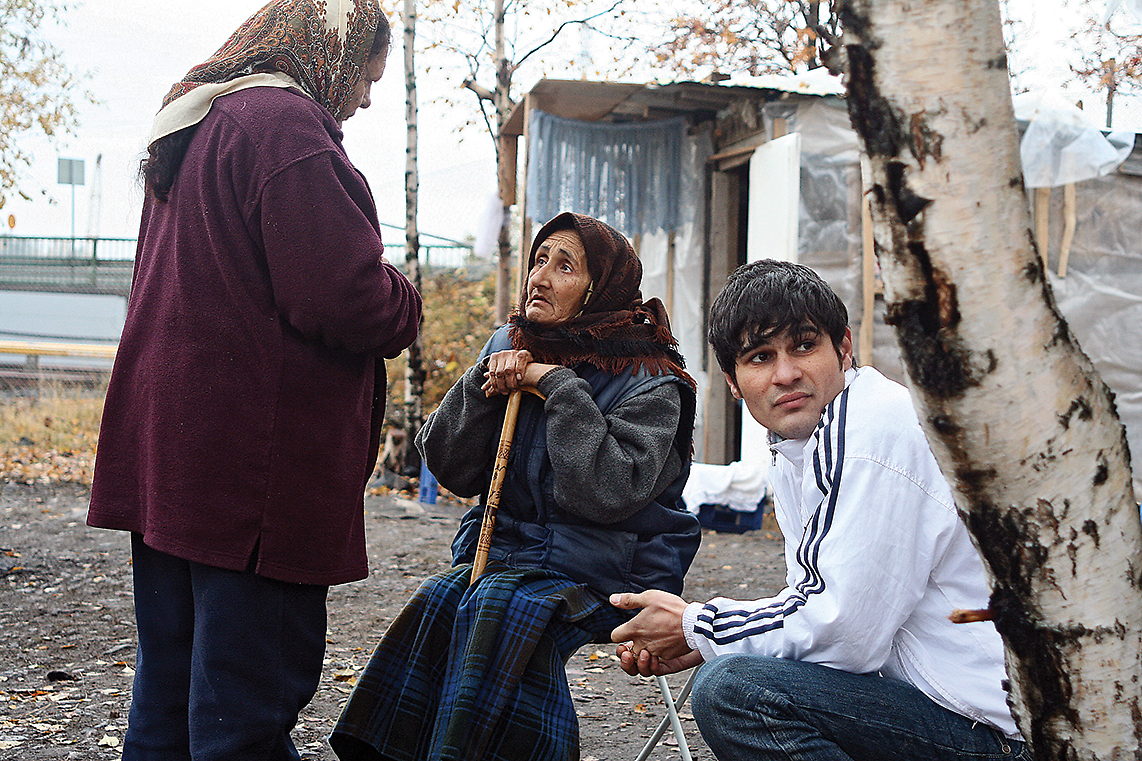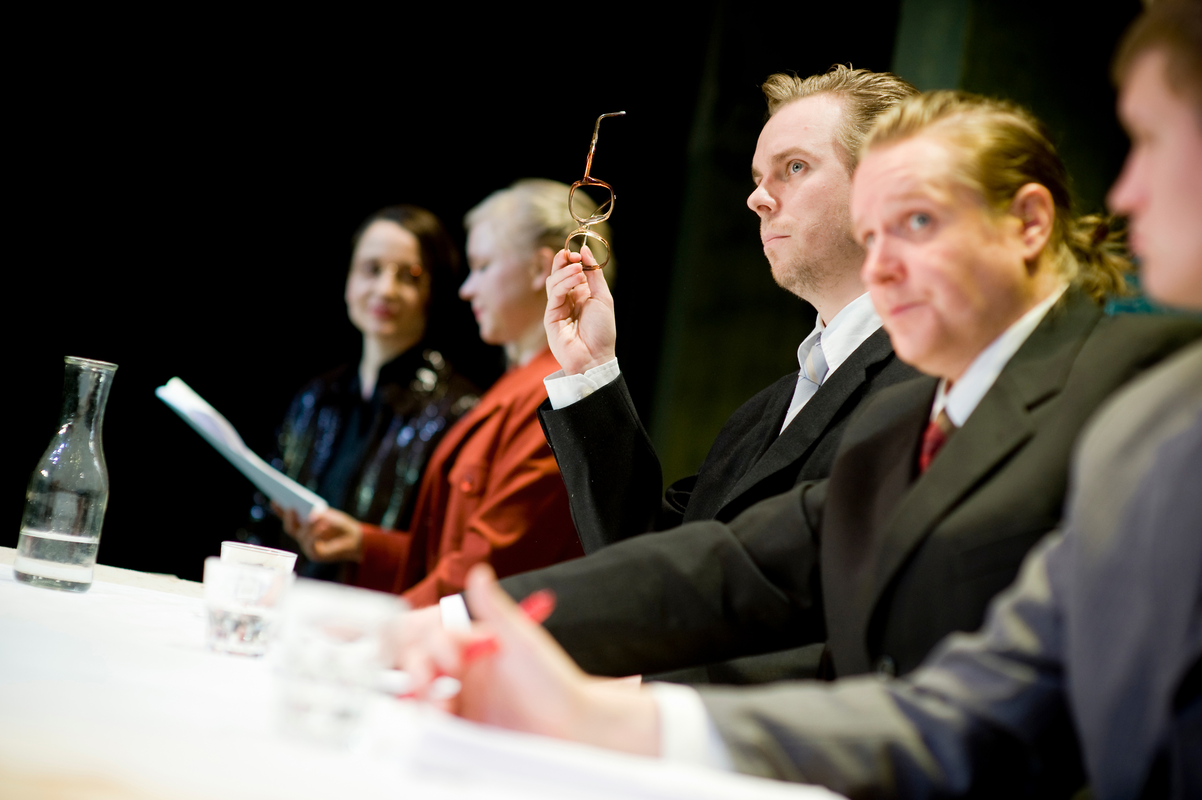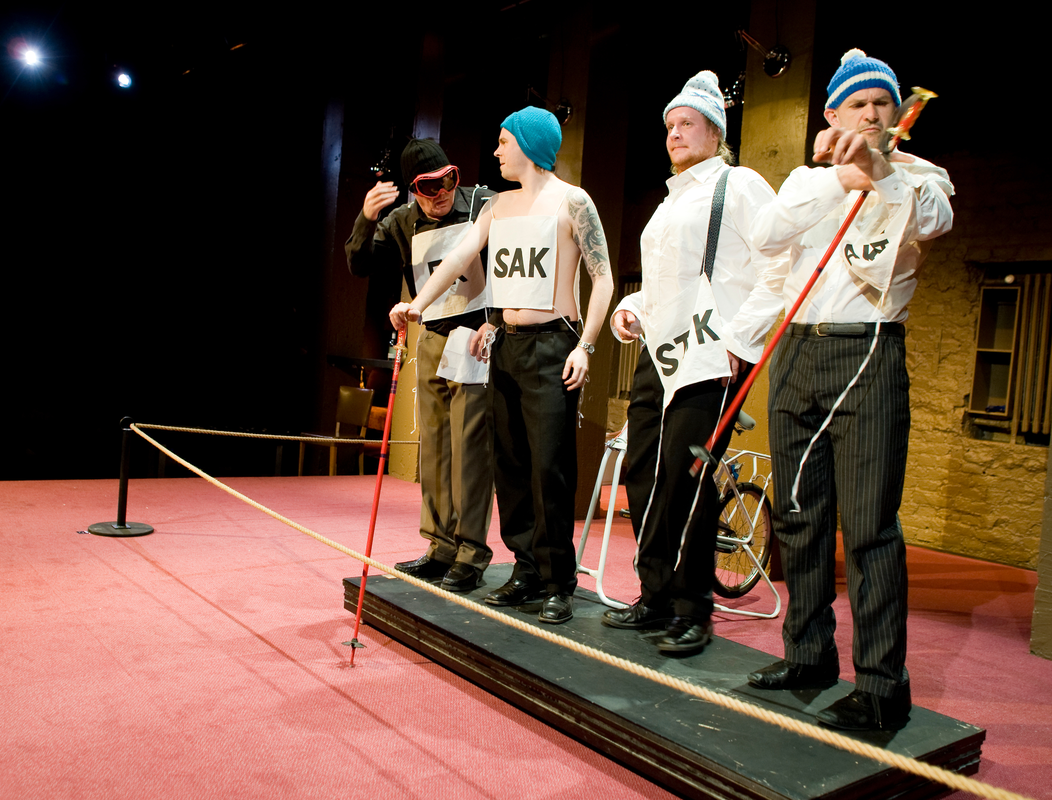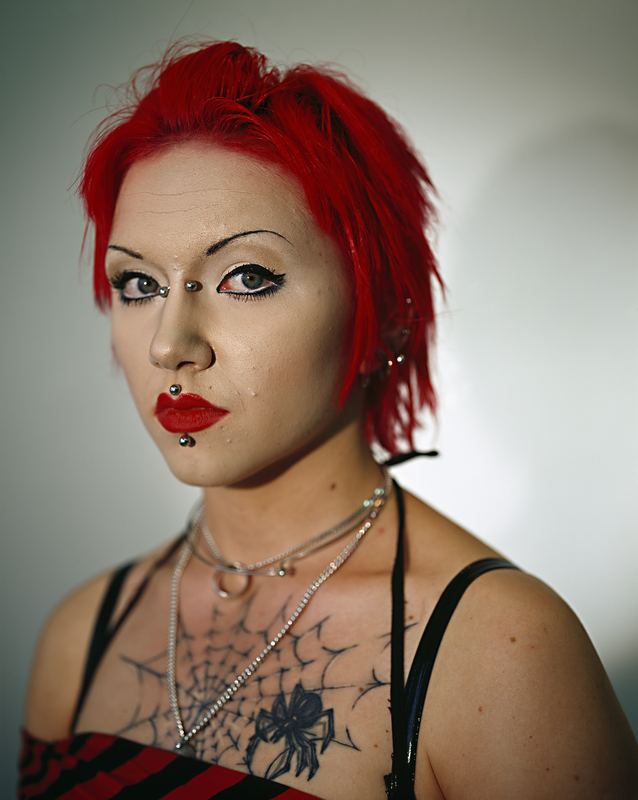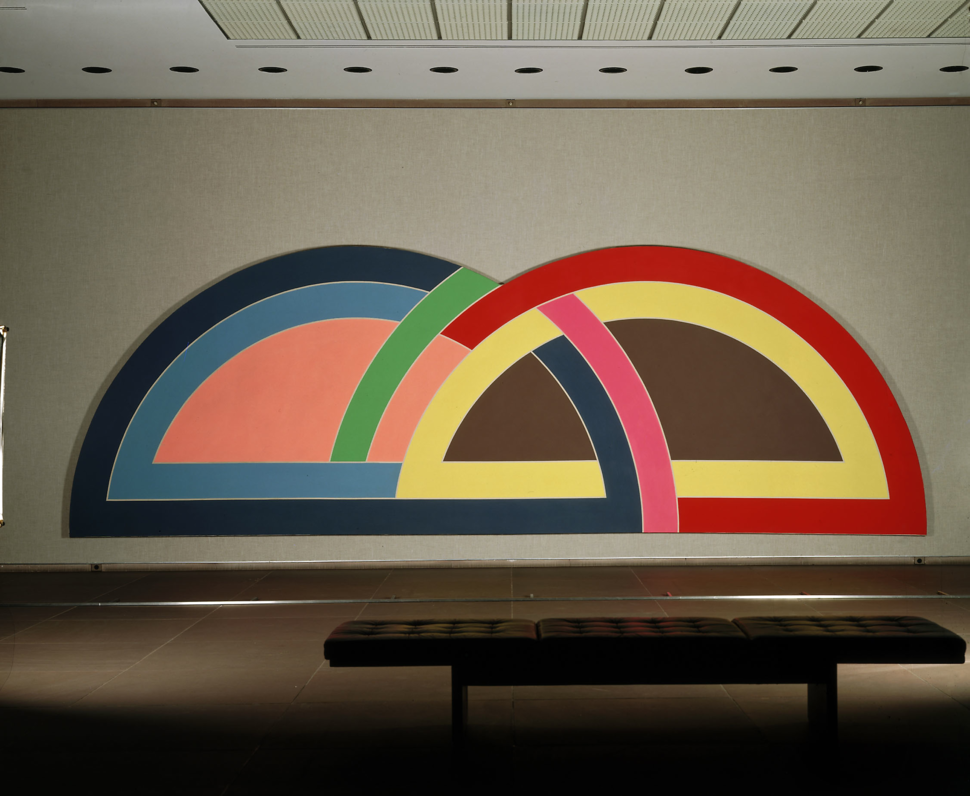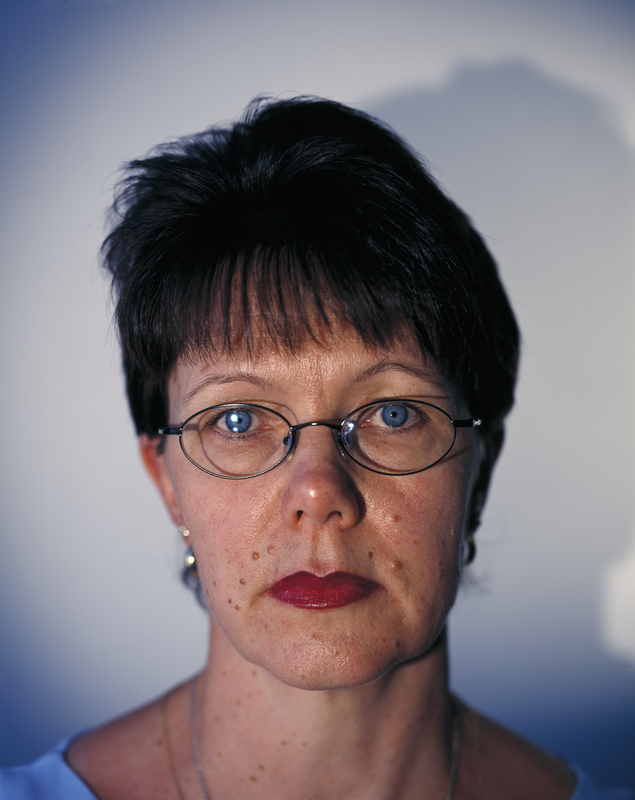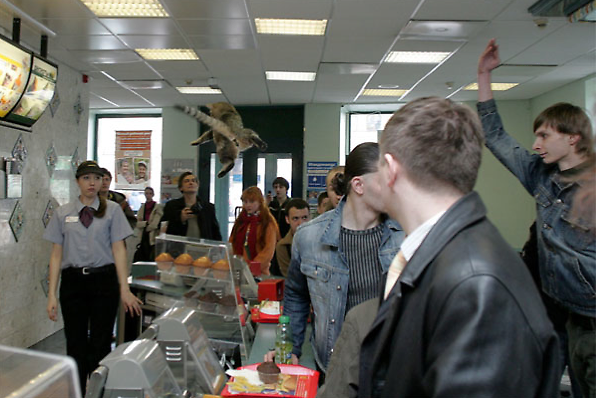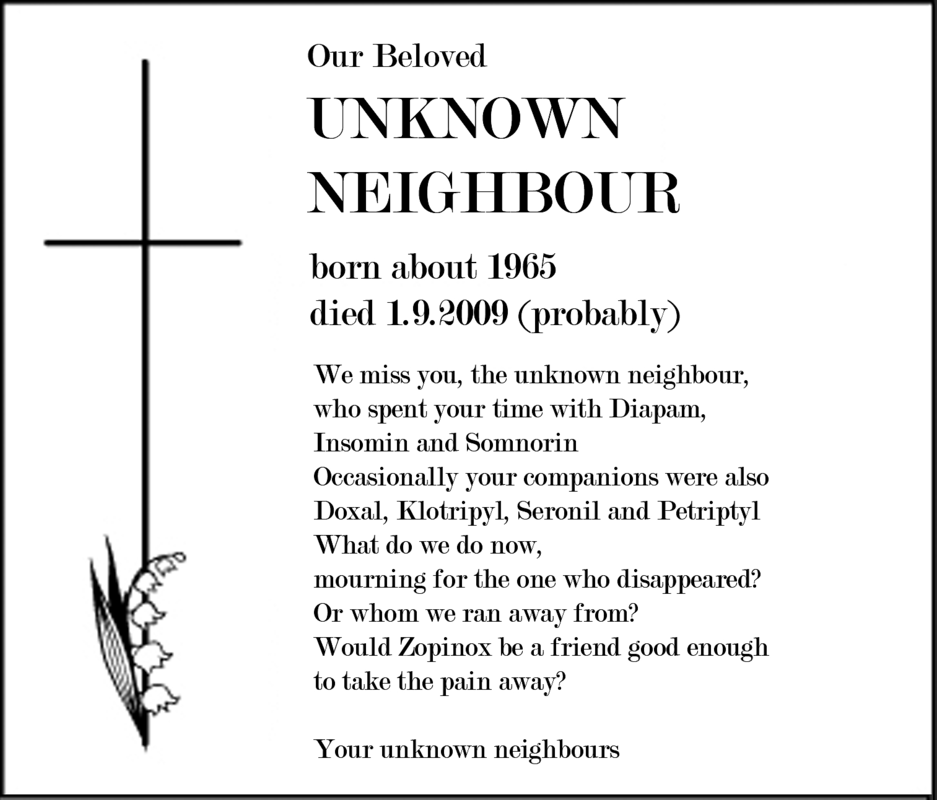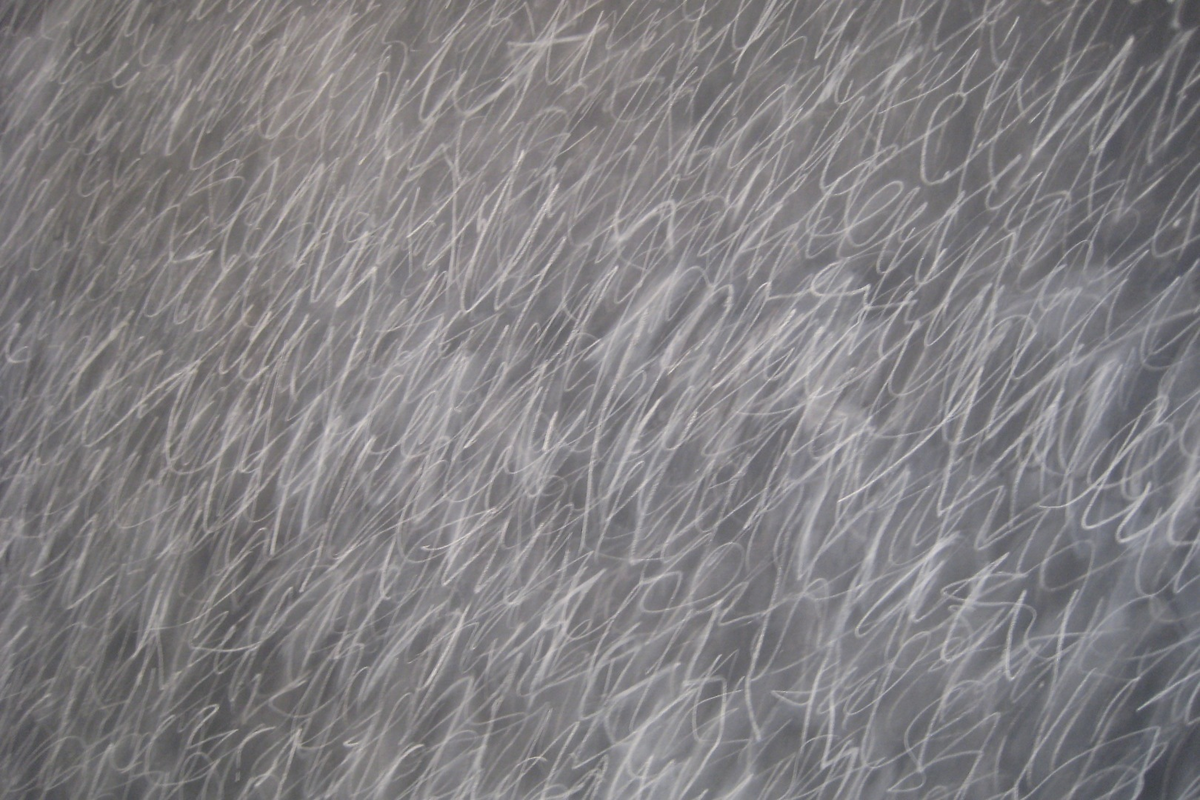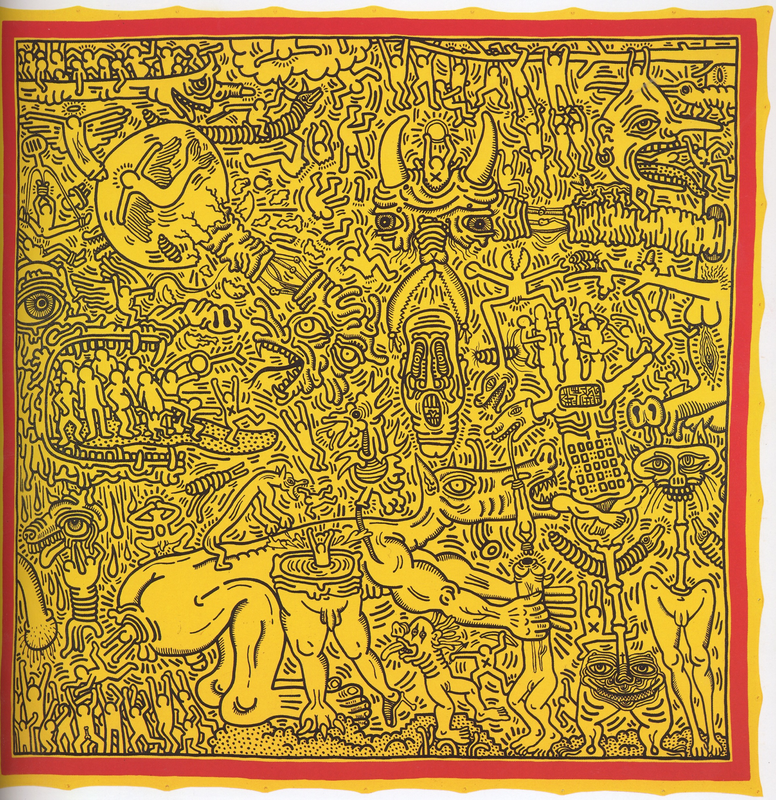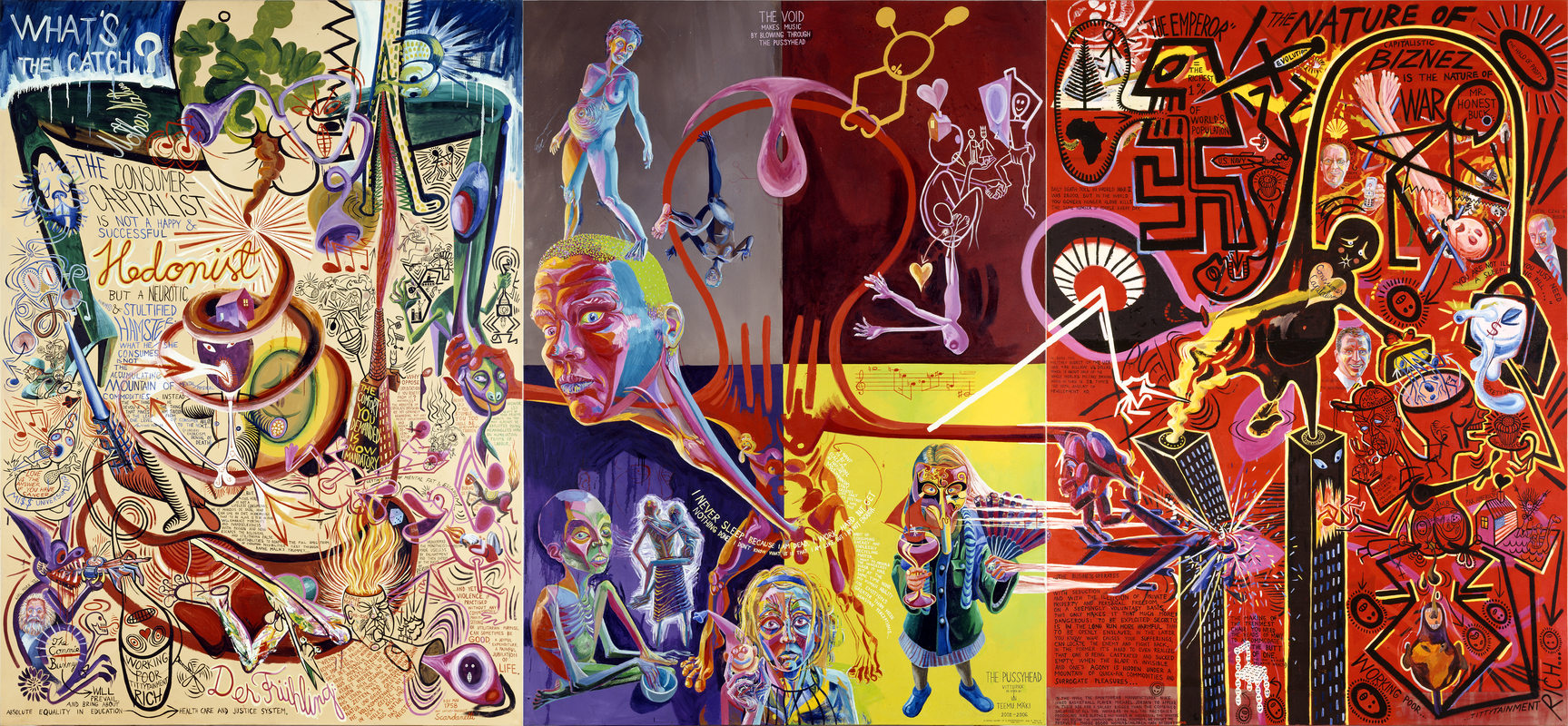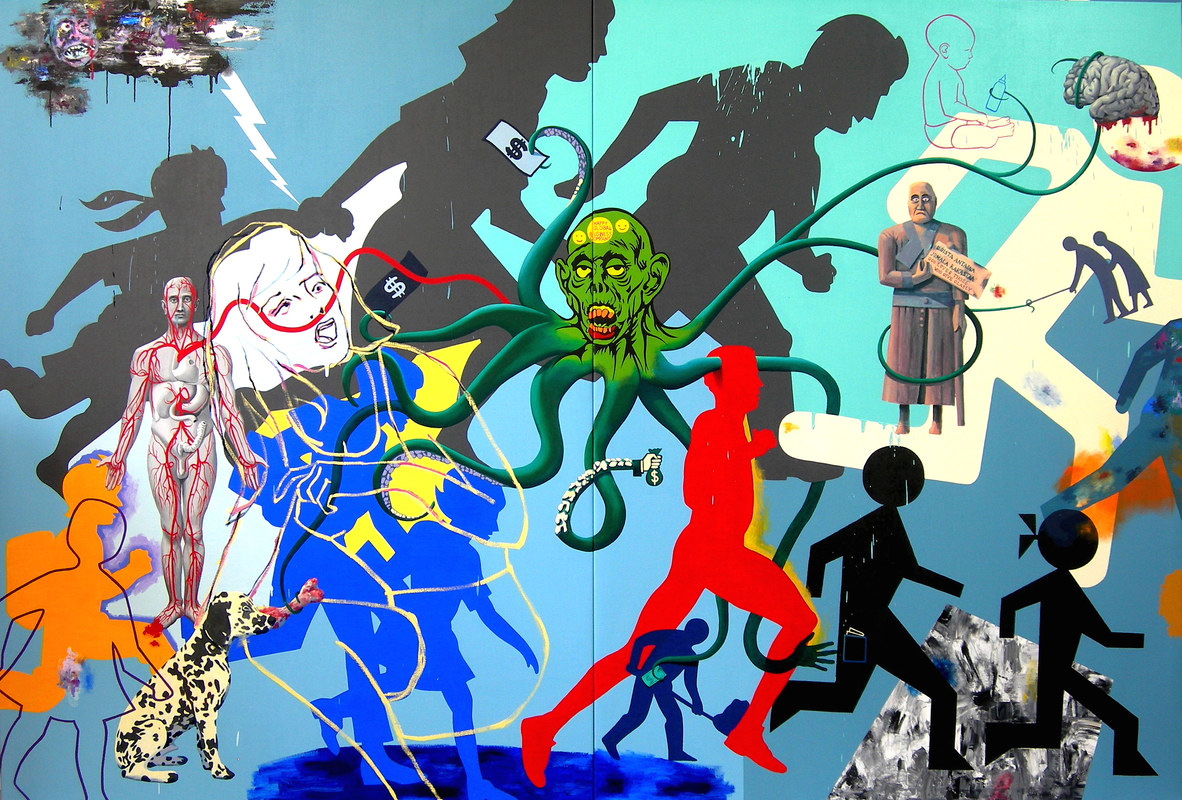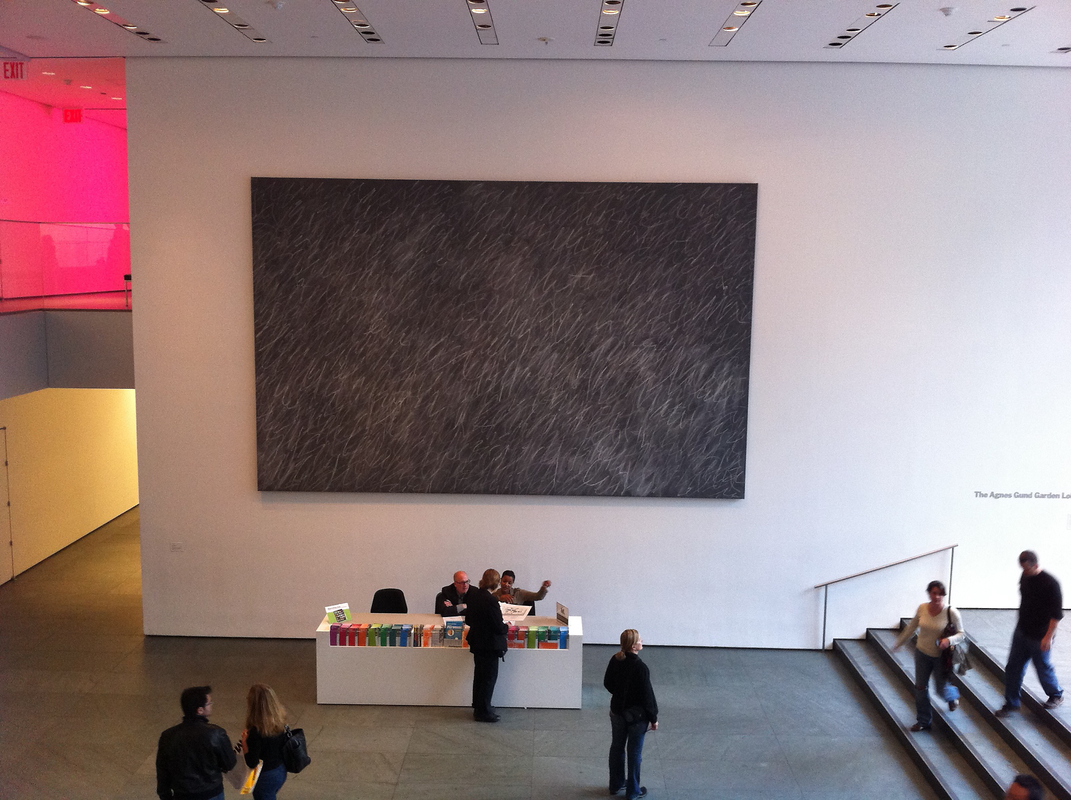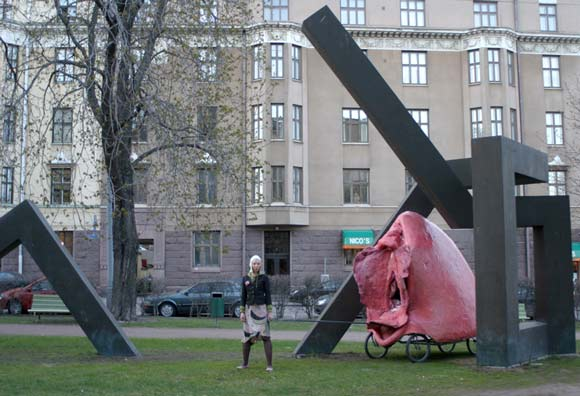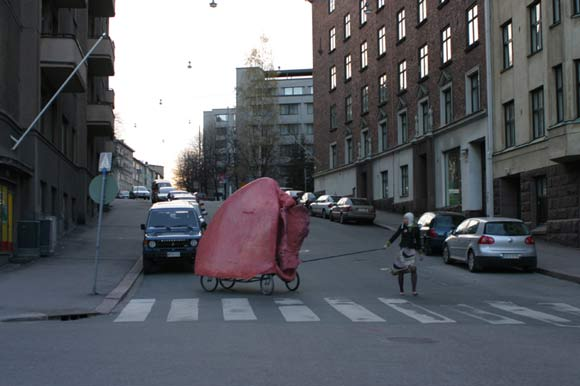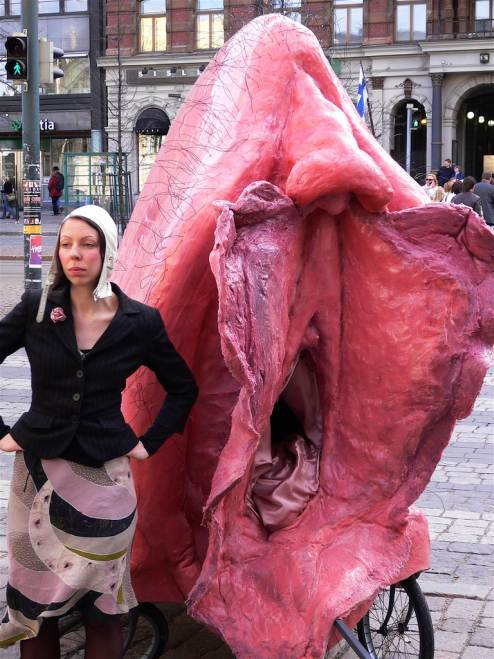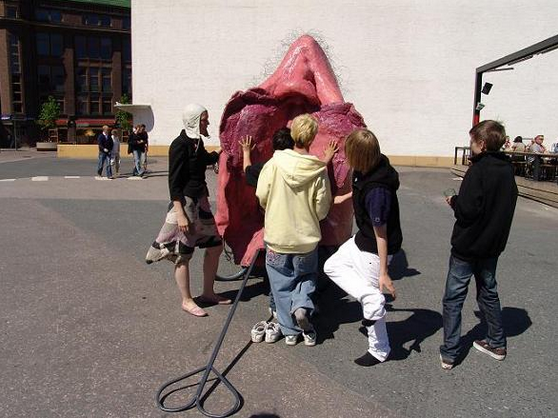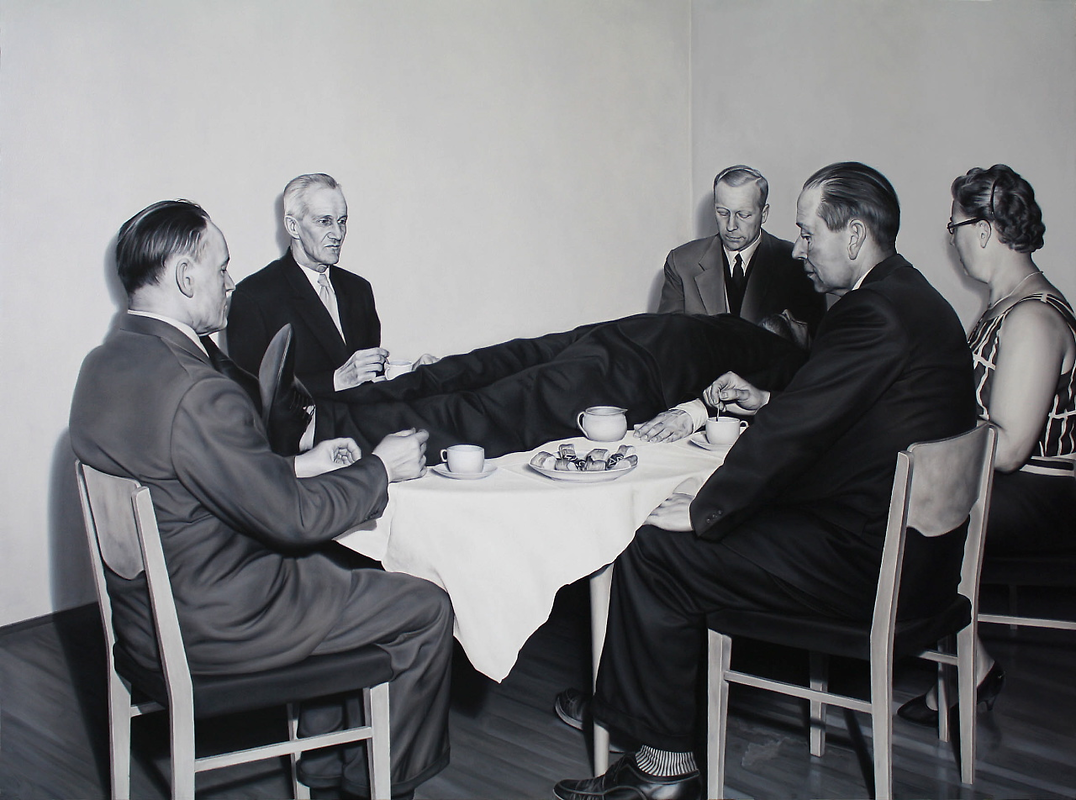For Finnish: Käytännöllinen utopia
3.1.2011–12.7.20141
What's going on?
What is the function art?
Does art have real political significance?
TEEMU MÄKI, www.teemumaki.com
FOREWORD
“What’s the function of art?” Of course there is no objective, undisputed and definitive answer to this question. Instead, there are several competing views on what kind of functions or duties are sensible for art. However, it is not a matter of taste, because art can be crucially important and fruitful or very insignificant, even harmful. Which of these opposites art is closer to at any given moment often depends on what we try to achieve with art, what functions we assign to it. Here I try to describe and justify my on view on art’s nature and function.
Before that however I have to speak a little about society and of the state of the world we live in, because one’s view on art is so organically a part of one’s larger worldview that I don’t think it makes sense to talk solely about art or about art separately. That’s why I first throw in my take on the state of the world, in a direct and simple manner, to give some background, to make understandable my art-related views which I then go into. In the beginning I in a way speak my mind about general political issues like as if I had to explain to a child or to an extraterrestrial alien what’s going on the earth, from the viewpoint of humans – and had only five minutes to do that. I’ve been told that this political rant will drive readers away and that it sounds like an extract from Monty Python’s How to Do It sketch series. I hope the rant doesn’t drive you away, but illuminates how and why I’ve ended up thinking about art in the way I have. And as far as Monty Python is concerned, I think it’s great if they come to your mind while reading this. In fact, it’s a dream come true for me if the beginning of my text – the ‘what’s going on and what to do’ part of it – has the same impact on you as the “Confuse the Cat” operation has on the cat in the Monty Python sketch “Confuse-a-cat”2.
When I write about art’s function, I propose art to have four basic functions, which maybe almost all people can in theory accept, no matter how strongly we disagree in practice on which particular works fulfill these functions and how. I’m thus looking for a common language and wavelength. In the middle part of this article – when I’ve already presented my view on what functions art in my opinion should concentrate on – I ponder upon how art has succeeded with these functions in the framework of so-called avant-garde and critical art. In the final part of the text I try to assess the impact of art on society; especially the impact and effectiveness and societal significance of the kind of art that is considered difficult, challenging and that has only a small audience.
WHAT'S GOING ON?
The fundamental features of our world are:
1) Unprecedented growth of production and consumption
2) Increasing depletion of natural resources
3) Accelerating destruction of the habitable ecosystem
4) Growth of global inequality
5) Transfer of political power from the citizens and their democratically-elected representatives to the immensely rich elite, multi-national corporations and the financial sector that functions by its own rules…
...yet, on the other hand
6) Unprecedented prosperity, the profuse amount of goods, services and, quite often, free time, which the great minority travelling in the first class of global economy — the hundreds of millions of industrious consumer-citizens — is able to enjoy, and
7) Fears, disappointments and a sense of deprivation that drive this minority that on the outside seems to be doing so well; these are the things that keep this First Estate diligent and obedient, no matter how well its members perceive the destructiveness of their own actions and become disappointed in the fruits of their labor.
Our plight becomes even more concrete when we consider some numbers:
A)
Each day, approximately 26,000 people die of hunger. The number is as large as the daily death toll in World War II. What is worse, hunger is by no means the most common form of suffering or cause of death for which we are responsible.
B)
If everyone used as much natural resources as the Finns, we would need roughly four and a half Earths to satisfy the humanity’s needs. With the Estonians’ consumption rate, four Earths would suffice, but the American way of life would require about six Earths. On the other hand, if everyone lived like the average Indian, we could make do with only half the Earth. However, mankind exceeded nature’s renewal abilities already in the 1980s. At present, mankind’s ecological footprint is 1.4 times larger than the biocapacity of the Earth3.
C)
According to happiness studies, we Finns are not substantially happier or more content than, say, the Beninese4. This is embarrassing, as the Gross Domestic Product of Finland is sixty-six times that of Benin5, and the average Finn lives twenty years longer than the average Beninese6. When it comes to the ecological footprint, however, it is Benin that emerges victorious; the ecological footprint of the average Finn is seven times larger than the Beninese’s footprint7.
WHAT IS TO BE DONE?
The states should:
1) Raise the taxes! The ecological disaster will come to a stop when actual production costs are added to the prices of goods as Pigovian taxes (= environmental protection taxes). Public services and commodities, such as education, social security, healthcare and cultural services, can be funded if the use of tax havens is forbidden and financial transaction taxes are introduced to regulate the financial markets. Land use will become more ecological when the related costs are dependent on the environmental impact of operations. Moreover, to increase equality the same (progressive) tax rate should be used both for income and for capital gains.
2) Provide debt relief to the poorest countries and encourage them to develop their domestic market and become self-sufficient instead of trying to accumulate money from exporting goods at all costs.
3) Introduce a basic income guarantee to make the negotiations between capital and labor more equal.
4) Guarantee that all citizens, regardless of their wealth and social standing, are entitled to equal education, healthcare and protection of law.
5) Place severe restrictions on the advertisement industry so that the necessary transition from the consumption arms race (= consumerism8) to disarmament can take place before it is too late.
6) Carry out an educational reform. At present, the schooling system educates people primarily for the competitive labor market, not for life. Indeed, we need a new kind of school that prepares people for life. The subjects should be divided into four, equally important, groups: a) Values, b) Physical exercise, c) Art and self-expression, and d) Technical skills and knowledge.
7) Remove all restrictions on the freedom of expression. Whatever people think, they should be able to speak aloud. And to prevent the richest and the strongest from dominating public discourse, the state must also maintain non-profit mediums, universities and cultural institutions as well as provide support for abstruse researchers, artists and forums which operate on a non-commercial basis or represent the minorities.
What you need to do:
1) Vote.
Become an activist — there are more ways to change the world than just voting and buying.
3) Practice fair trade.
4) Prefer local products and services.
5) Live without a car.
6) Learn to live in voluntary poverty.
Spend more time and energy on pleasure than on acquiring its external preconditions. The work that sustains you and society is necessary and requires much effort. However, pleasures, non-destructive, non-numbing pleasures in particular, require at least as much effort, diligence, learning and concentration as work. If you only concentrate on the former (work), you will never learn the latter (pleasure). Instead, you will live your life chasing the external preconditions of pleasure — the mirage of material prosperity — and in this way cause the most severe of our problems.
But what is the function of art in this world?
THE FOUR FUNDAMENTAL FUNCTIONS OF ART
Is art A) a way to pass the time, that is, a means of escaping the reality for a brief moment to get some rest, or B) a way of confronting the reality and a force for reforming society?
It is both. There will always be debate on the definition, function and quality of art, but despite dissenting views, everyone hopes that art can provide them with one or many of the following things:
1.
Pleasure
There are two opposing kinds of artistic pleasure: the one that offers an escape from the reality and the other that seeks to confront it. If art can help people to forget their personal worries and social problems even for a brief while, we can call it entertainment. The opposite of this is critical art, which forces or entices you to face yourself and social problems in an exceptionally intensive way, while also making you to ponder on how meaningful your life is. We can see that the two approaches have contrasting goals, but what is common between the people looking for oblivion and those seeking understanding is the aspiration to enjoy themselves either by making or consuming art.
Escapism, i.e. diversion from the reality, is often harmful. Consider a cleaner, a telemarketer or a banana picker, who suffers from bad working conditions and an even worse pay, and who is in a position where she is constantly objectified, belittled, and regarded as a loser.9 This person is both economically and politically oppressed, whether she herself is aware of it or not. But what use will she have for art? Perhaps she can use it to escape into the world of romantic fantasies where social problems do not exist. All there is are evil stepmothers, bloodthirsty dragons or a cruel and miserly lord — and an escape in the form of a rich prince, who offers perpetual bliss in a relationship. The fantasies of this kind may be comforting and entertaining, but they cannot function as a source of emancipation or empowerment. Enjoying them means alienation and accepting defeat: tolerating the reality instead of changing it.
I think that the majority of art is escapist and affects us like a bottle of vodka. However, art is also able to offer other kinds of pleasure. Facing the reality head-on may turn out to be even more pleasurable than escapism. The possibility to understand and ponder on the fundamental questions of life can be ecstatic experiences. They can intensify one’s experience of existence, even when the new understanding and the relevant aspects revealed by art may well be gloomy, harsh and humiliating.
In practice, however, the line between entertainment and critical art is often obscure, ambiguous and personal. The same work of art can be used both for escapism and for social and self-critical consideration. The bloodiest plays of William Shakespeare (1564—1616) can be enjoyed as mere splatter entertainment. On the other hand, an unintentional, written between the lines, yet socially insightful description of the way how the “self-made” American dream breaks down can be found in Sylvester Stallone's (1946—) Rambo and Rocky film series.
The boundary between escapism and critical art does not follow genre divisions or the rough attempts at classifying art into high and popular culture. And not all fantasies are escapist. Fantasies may also offer a way to face and deal with the reality because people use their dreams and nightmares both as sign posts of their personal reality and as tools for shaping it. Furthermore, the reality has many aspects, such as the physical-objective, the social, as well as the subjective and individual sides.
The discussion is further complicated by the fact that both the escapist kind of pleasure and the pleasure gained from intensively facing the reality quite often co-exist without neutralizing each other. You may use a work of art to forget some challenges in your life, but simultaneously use it also to face some other challenges head-on. For example, you may enjoy a gangster film because it provides you with the necessary excitement to help you escape the boring blandness of your life, but you can simultaneously use the same film as a platform for political analysis: you can for instance consider the differences between blood-shedding and structural violence, their similarities and causes, as well as the morality of economics and the current topics in world politics. For some, the perfect film for this kind of duality will be Brian de Palma’s (1940—) excessively dramatic gangster myth, Scarface (1983), while for others David Simon’s (1960—) shabby realism in the form of The Wire (2002—2008) television series will do the same.
Escapism and criticality are potentials present in all art. It is up to the individual work of art and its consumer, which of these potentials is emphasized.
An illuminating example of this duality is "Mind of a Lunatic" (199010), a song by Geto Boys. The track is belongs to the most extreme subgenre of gangster rap. Its lyrics are about raping the neighbouring girl, killing cops and in the end about being hunted by the police and getting gunned down by them. In a sense it is of course a purely escapist fantasy. It's a song made by four poor, uneducated and ugly black losers from Houston, Texas, escaping their reality into sadistic and suicidal fantasies — and probably also aiming at achieving the American dream, getting rich.
But on the other hand it's also a meaningful response to and commentary of reality. Between the lines it says: "I'll take your prejudiced fears about myself and boost them into a such a nightmare that I'll gain some real respect from you in the end." The song is also in a way quite realistic, as it makes powerfully audible how the Geto Boys honestly feel.
It can also be seen as an ironic and humorous take on Western class society and capitalism — in the style of American Psycho but one year before the publication of Brett Easton Ellis's (1964—) novel. The whole album is full of psychopaths that blabber about their adventures and these characters can be seen as nasty parodies of the yuppie heroes, untiring careerists for whom the whole life is a struggle for survial, pursuit of personal, consumerist pleasure and ruthlesness is a virtue. Interpreted like this, it doesn't escape the reality, but instead reveals the core of political reality and thus increases understanding.
2.
Sparking discussion
By asking good questions, art encourages people to recognize and solve difficult problems and to create new life / values / technologies / society.
This is perhaps the most popular claim made in contemporary art discourse. However, there are at least two problems related to the sparking of discussion. First of all, is it possible to spark discussion in a neutral way without taking a firm stance towards the topic of the discussion? Many artists emphasize that they cannot offer answers to the topics they have raised; they only wish to make people think for themselves. But can these artists succeed in their efforts? Is it not so that discussion will only start after someone has expressed an opinion that either shocks or entices people into considering the subject of the discussion and forming their own views on it?
Second, is it still important in our present society to spark discussion? Is it not so that the world is full of not only chatter and babble but also serious dialogue, which for its part, only rarely leads to actual decisions and action?
3.
Pursuing wisdom
Art can be an extended and flexible form of philosophy and politics. Art does not have to content with just “asking good questions” — it can also try to answer them.
We are immediately faced with skeptical questions: How can art possibly answer “the good questions it presents”? Is it not so that the answers are created somewhere else, for example, in scientific or technical discourse or philosophical-political theory? If art attempts to enter the field of knowledge and morality, will it be able to assume a role that is something more than that of a press officer or an advertiser? Art is certainly good at illustrating the teachings of Enlightenment and human rights philosophy and as a communication tool and persuasion technique, but can it become anything more than that; can it transcend the role of an errand boy?
For the answer to be “yes, it can”, and for art to be seen as a form of critical thinking and action that deserves to be taken seriously, we must redefine art’s relationship to knowledge, values, worldview and pleasure. For example like this:
A)
Art creates, tests and spreads also quite regular knowledge, that which can be verbalized, verified and distributed with precision. In this function, art can utilize either more general methods or, alternatively, methods that are characteristic only to art. It is because of the latter kinds of methods that art is also able to create knowledge that would otherwise not be created at all. For example, the methodology used in a research survey can also be used in art. Moreover, it is possible to carry out, say, a preliminary statistical study for an artwork, but in addition of these methods — or in their place — art can also make use of various other methods, including participatory intervention in a public space, performance or a false advertisement. These can also be used to acquire knowledge of people’s behavior and values or to communicate different points of view and their rationales to them. It is often acknowledged that art is an effective form of communication and that it is able to convey values and knowledge in a particularly dense and touching form. However, it should also be recognized that art is not only a communication method but also a method for creating knowledge and understanding. In this sense, the so-called political art often is by its aspirations and goals very close to everyday journalism, discourse and politics.
B)
Art may spread regular, verbalizable knowledge in a very compact and striking form. It's an efficient form of knowledge distribution, when it wants to be.
...but what is even more special and valuable is the fact that:
C)
Art makes experientially true the values and knowledge, which we otherwise would often adopt only superficially.
We can have, for example, factual, mathematical-rational knowledge of how mutual trust and love are formed in relationships, how and to what extent buying Fair Trade bananas helps reduce exploitation11, and how we can battle climate change. However, this information does not necessarily lead to action. Why? The usual explanation is that knowledge is not enough if one does not have the courage, diligence and moral drive to do in practice what one supports in theory. However, we can also extend the definition of knowledge and say that the mathematical-rational knowledge described above is merely one breed of knowledge and that the aforementioned passivity is not so much a case of emotions defeating knowledge, which would leave knowledge unused, but instead a case of knowledge remaining only an incomplete stump, a mere list of information or principles, which we do not take seriously, because we have not really internalized it.
A large part of what we know is of that type: we have not really digested it. We also put into practice only few of the values which we praise in principle. Knowledge and the raw material of values tend to pass through our mental digestive system without actually being absorbed, leaving no trace and having no influence on our behavior. Correcting this failure is one of the basic functions of art. We can do this, for example, by following the teachings of virtue ethics, by using art as a way of training and intensifying our positive emotions and personal characteristics. Shoah (1985), a documentary by the philosopher-artist Claude Lanzmann (1925—), forces the viewer to ponder on the Holocaust in a more embodied, experiential way than history books. And the Oresteia trilogy (Agamemnon, Choephoroe and Eumenides, 458 BC) by Aischylus (525—456 BC) can intensify our sense of compassion and make us understand the relativity of justice more efficiently than any non-artistic method.
These works guide us to sympathize with all the characters, thus making us understand the conflict from several points of view at the same time. On the other hand, they distance us from individual perspectives and agitations and challenge us to consider the conflict more rationally. Works like these are an important form of moral philosophy because in them we can think of values in a way that on one hand is passionate, compassionate and goes deep into individual's perspective, but on the other hand clearheaded and analytic, as if the entirety was simultaneously examined from a bird’s eye view too.
D)
Art creates and distributes the kind of silent, tacit or experiential knowledge and values that are only partially verbalizable. Art (and philosophy) are essential, because values cannot be derived from mere facts. In other words: from how things are we cannot directly draw any conclusions about how things should be. David Hume (1717–1776) formulated this idea compactly as "there is no ought from is" in his book A Treatise of Human Nature (1739–1740). Moral realists, ethical naturalists, and many utilitarianists disagree on this, of course, but it is still fair to say that for many or for most in contemporary philosophy and politics the central dilemma is: How to make the leap from facts to values? What can moral reasoning be based on, how can we make moral choices without pretending that all that is needed to support them is objective reasoning with pure facts? On the other hand, how is it possible to prevent moral reasoning from collapsing into matters of mere taste? The challenge is especially fierce right now, when conflicting moral systems and traditions collide in our globalized world more and more often without a shared or objective measuring stick or an authority that could solve their conflicts. Moral discourse is more necessary than ever, but unfortunately, it is increasingly often avoided by delegating value statements to the "blind hand" of the market forces.
Values float somewhere between facts and subjective evaluation, so in testing and creating them, neither sheer feeling nor clean, clinical reasoning is enough. Art operates in this unclear territory, dwelling on questions, such as: "How does it feel?", "How is it?", "What do I really fear, and what do I really want?", "Why should we keep on living, and what makes my life worth living?", "How to make a life out of mere living?", "How should we live?", “How to be a man or a woman and why?” and "What is good life?".
Art includes a lot of verbalized or verbalizable reasoning, but art's greatest strength is in the continuation of thinking beyond verbalizable reasoning. Of course ‘verbalized or verbalizable reasoning’ is not the whole truth about what reasoning and words can do. For example poetry is almost always reaching ‘beyond the words’, i.e. strives after the kind of language, where the meaning is not univocal and fixed, and after the kind of reasoning, where the means and goals remain open. And on the other hand many nonverbal expressions are as univocal as legal texts.
Especially when perceiving, testing and creating values it is necessary that we can reach beyond the verbalizable, since the ability to appreciate things, the will to live and the joy of living are mainly experiences, not conclusions of rational pondering. Art is the most efficient (though not the most used) man-made method for moulding our lifeworld, and thus an excellent form of innovative and embodied moral pondering.
E)
In art we shape our worldviews in their most complete and full-bodied form. A person's philosophical-political conviction is not just a collection of verbalized propositions and their rationale. It is a more extensive, holistic thing: a worldview, an outlook on life, some kind of multisensory vision of what has been, what could be and what one would like the world and the self to become and how.
When this full-bodied visionary form of the philosophical-political conviction is then tamed into neutral, matter-of-fact, fully verbalized argumentation, a secondary form of worldview is created. It is an attempt to condense the primary form into something more easily manageable, into something which can be communicated with fewer misunderstandings and justified more easily.
There is room for direct philosophical-political argumentation in art too, but even more important is creating, testing and expressing a worldview as artistic visions, without any pressing need to translate them clumsily, step by step, into a verbalized argument. I must underline that I do not mean that art should avoid direct, verbalized reasoning. Instead, I merely state that art, in artistic expression and artistic reasoning there is room both for that which can be verbalized and for that which cannot, but the emphasis should be in the latter, even though it often is so that to reach valid non-verbal reasoning one must first pass through verbal reasoning or keep verbal reasoning going on side by side with the nonverbal all the way.
F)
Art is a good method for dealing with questions and problems for which there is no final answer or solution, but which we still have to face in one way or another.
For example, the previously mentioned "What is good life?" is a question, which cannot been solved like a mathematical equation. Mortality is another, similar challenge. On one hand, it is simply an enemy that we fight when trying to reduce the infant mortality rate. On the other hand, it is something totally different. We can philosophically reason that mortality is a part of life, not an enemy of life, and that if one wants to live well, then one has to come to terms with one's mortality somehow, maybe even learn to praise mortality as the ultimate source of all passion and the creation of values.
Yet no matter how hard one intellectually toils away with these both, the challenge of mortality will not be resolved. We cannot solve it like a crossword puzzle — not even if infant mortality was reduced to zero — as our relationship with death is contradictory and filled with tension in such a fundamental way.
In art, we try to adjust and compose this relationship and this tension, so that it would be as pleasurable, meaningful and life-affirming as possible. Of course, art does not have a monopoly on this kind of adjustment. Surely, for example, politics is also often about facing the same kinds of problems, which cannot be permanently solved in the way problems caused by technical obstacles can. Polio can be totally eradicated from the world, but balancing rights and responsibilities is a permanent challenge for societies and individuals as well. However, in art, this adjustment of life often reaches its most complex form: that in which the question is not only about solving problems in the technical sense any more, nor is it about composition in the simple sense of balancing a few elements on a horizontal equilibrium, similarly to the scales or a seesaw; it is about composing the whole life, without rules and without any other clear goal than good life — the criteria of which remain permanently open.
G)
It is harder to read a good poem than to write it.12 This is the opening line of a poem of mine, and it is my honest opinion that one of the special features of art is the fact that consuming art is often as difficult as making art: it requires as much effort, expertise, patience and enthusiasm. This is why three things — work, the fruits of one’s labor and enjoying these fruits — come together differently in art than in normal production and consumption. In a culture that focuses on possession and consumption, these three aspects are sharply divided from one another: the enjoyment you get from your work is measured by your pay, the fruits of your labor are the things you can acquire with the money you get, and enjoying these fruits means that you lie down on a flying carpet — the opposite of labor.
In art, however, this division is invalid. In art we try to learn to live our lives in a different way: to love existence and mental struggle and to accept that building and owning the instruments of pleasure and the external preconditions of pleasure is, at best, only half the journey. To know how to enjoy things and to practice one’s skills of enjoyment require at least as much effort.
4.
The cultivation of emotional life: the intensification and diversification of the world of experience
It is as necessary and possible to cultivate our emotional life as it is to train our powers of reasoning, our problem-solving capabilities. Our goal in this is both instrumental and an end in itself. It is instrumental in the sense that we try to become aware of what we feel and why we feel it, learning to regulate our emotional life and guide it to the desired direction through self-understanding. We may do this, for example, to increase our tendency for compassion. In this mode, our goals are defined by reason, utility and morality.
However, the non-instrumental, the end in itself goal is even more important: to be as intensively alive as possible. In art (too), we strive for a maximally dynamic and diverse world of experience. We keep expanding the scope of our emotions ever further. However, it is not about searching for just exciting extremes of existence, because we are simultaneously learning to enjoy a maximally diverse range of experiences and to accept as many different emotions as we can; we seek to appreciate the whole scale of emotional intensities from a barely noticeable sense of being touched to a raging shout, and to value both crystal clear, unambiguous emotions and multifaceted mixtures.
Contemporary art enables us to see as beautiful or rewarding many things and experiences that in the past were thought to be categorically repulsive. An example of that past is the narrow esthetics of classical ballet. Now we may for example go to the theater or a dance performance whose performers do not exhibit any kind of obvious motoric virtuosity. And the performance may at many points intentionally try to bore us to death, irritate and humiliate us or to claim that our lifestyle is doomed. And instead of being stylistically consistent and formally coherent, the performance may be dissonant and proceed towards increasing entropy. Yet despite of all this — or precisely just because of it — we may still think that the performance was absolutely hilarious, charming, moving, enjoyable and energizing.
In practice, the four functions of art — pleasure, the sparking of discussion, wisdom and the cultivation of our emotional lives — are not separate but tightly intertwined. For example, it is not a good idea to develop one’s emotional/experiential life in isolation. Instead, this should be done together with reason, as emotions without reason are nothing more than a meager stub, and they will easily become boring. And many feelings and experiences — even those which are difficult to process or put into words — are created, intensified and diversified precisely through intellectual reasoning.
CRITICAL ART (née AVANT-GARDE)
If art refuses to be only entertainment, and instead provokes fights, makes critical comments about the world and reshapes our world of experience into something new (i.e. fulfills all four functions of art), it is often referred to as avant-garde. This kind of art strives for an internal or an external revolution, and it is divided into two traditions: aesthetic avant-garde and social avant-garde. Social avant-garde has also been called political art and, more recently, critical art.
From the perspective of social activity and the great threats listed at the beginning of my paper, which constituted a kind of global emergency, there are two kinds of art in principle: art that maintains the current worldview (conformist / adaptive) and its antidote (non-conformist / critical art), which tries to change the world.
Both traditions of avant-garde believe that they can change people in a fundamental way.
Aesthetic avant-garde tries to set art free from all social references and instead create an aesthetic sphere of its own, which would simultaneously be independent of the social reality and an alternative for it. “I paint with my back to the world”, said Agnes Martin (1912—2004) of her artistic work13.
Is aestheticism then just escapism, high culture’s version of silly fantasy literature and of the video game console entertainment? Well, at least the aesthetes do not think so, according to them, aestheticism differs from escapism in two ways. First of all, they believe that the aesthetic sphere, or the alternate reality where it is set, is not an escapist illusionary space, but rather a reality that is more profound than our everyday reality. Second, they think that the experiences that take place in the purely aesthetic sphere are so intense that it is not sensible to compare them to the fleeting comfort that games and intoxicating substances offer. The aesthete also believes that his drug of choice does not lead to a hangover or exhaustion, but will elevate the mind instead.
Although the aestheticism has demanded the separation of art and politics, the movement has nevertheless tried to acquire social significance through a kind of negation. It has, for example, often assumed that a person totally enamored of pure color field painting, will find something spiritual in the game that purely abstract elements (color/line/form) play with each other — making no references to the world outside art — something spiritual that she on one hand enjoys as such, slurping disinterested pleasure, yet on the other hand decodes it with her own intuition and translates it to everyday politics, which make her a more humane citizen. Or that being passionate about the abstract universe of colors, forms and rhythms will release you from the pursuit of earthly possessions and other external values, and in this way function, paradoxically, as the engine for radical politics precisely because of its seemingly non-political nature.
Social avant-garde / critical art in turn has insisted that art should abandon its entertaining and decorative functions and the loyal repetition of current values. Instead, critical art has proposed that art should engage itself concretely in political matters, comment on world events through words, sounds, images and dances — and be both the visionary and the leader of the troops, the vanguard, of revolution. This is what I've tried to do with collective paintings made with youth groups, such as Home Alone / Yksin kotona (2006—2007)14.
Aesthetic avant-garde has often fallen short of its objectives, withering into perfume-like entertainment, which has not been able to offer a more provoking alternative to social reality than escapist fantasies. Moreover, it has been unable to take the members of its congregation to the spheres of such powerfully clean aesthetic contemplation that the members’ lives and routines outside of art would have changed in any significant way. Does the aesthetic avant-garde of Wassily Kandinsky (1866—1944), Agnes Martin, Jackson Pollock (1912—1956), Frank Stella (1936—) or Cy Twombly (1928—2011) have the power to change us or our society, or will they simply remain soothing wallpapers, decorations of cultivated taste?
Of course, there is no definitive answer, and the end result is as much dependent on the viewer as it is on the work. Martin’s minimalistic painting, for example, can be seen to pose a radical challenge to one’s concentration, the ability to perceive even the slightest differences in tones and rhythms, and the ability to enjoy them. Indeed, this challenge is undoubtedly the aesthetic antithesis of the gorging, noise and brashness of consumer capitalism. On the other hand, it is quite likely that there are few viewers who experience these paintings as a critique of bourgeois hoarding and the entertainment culture focusing on immediate satisfaction. And probably few feel that these works demand that they change their lifestyle in any radical way. It is more common to perceive Martin’s works as be soothing and non-disruptive — the Rolls Royce of muzak. When the latter happens, the works end up supporting what is actually their opposite; they function as moments of rest, which help the consumers regain their strength and to be once more able to enjoy a consumption spree.
On the other hand, while striving to achieve an immediate political effect, social avant-garde has often become enslaved by fixed political ideologies and ended up as mere illustration or an advertising tool. Ideologies, i.e. systems of ideas, do not automatically have to become stagnant structures where people stop thinking and keep repeating memorized attitudes and slogans. It must be admitted, however, that this has often happened in art as well.
However, the differences between the two types of avant-garde should not be taken as a black-and-white dichotomy. It is more important to emphasize that there is no such thing as politically neutral art. Every work of art expresses and personifies some worldviews and outlooks on human existence and simultaneously opposes several others. This is also true of the so-called abstract works; the only difference is that their language is less mimetic, less based on imitation, than the language of more figurative or even so-called realistic works. For example, the music of Luigi Nono (1924—1990), Iannis Xenakis (1922—2001), Borah Bergman (1933—) and Evan Parker (1944—) is uncompromisingly abstract. However, their music is also strongly argumentative in the philosophical-political sense, reminding us of our fragility and mortality. Moreover, its psycho-physical form is so challenging that it can never be used as mere decoration or background noise, nor will it ever encourage us to go shopping or stop thinking.
In any case, the challenge of both these traditions of avant-garde is this: how to make art that can transform the individual and society? How do we combine poetry and politics, utopia and practice? How to avoid producing lofty elevator music or illustration for conference papers?
I would like to provide some ecumenical evidence for the similarities and the merged nature of the two types of avant-garde with a few examples. Susanna Kuparinen (1974—) is a theater director and a journalist, who has made three plays that were based on the meetings of the Helsinki City Council (Valtuusto 1—3, ‘The Council 1—3’, The Helsinki Student Theatre 2008—2009) and two plays based on the minutes of the plenary sessions of the Parliament of Finland (Eduskunta — Poliittinen satiiri vaurauden uusjaosta, ‘The Parliament — a Political Satire of the Redistribution of Wealth’, Ryhmäteatteri, Helsinki, 2011, and Eduskunta — Satiiri veljeskuntien Suomesta, ‘The Parliament — a Satire of the Finland of Secrets Brotherhoods’, Ryhmäteatteri, Helsinki, 2012). In a way, the performances are dramatic documentaries: the dialogue is taken word for word from the session minutes. The works are exceptionally outspoken examples of political art, analyzing the power relations in our society through factual case studies and demanding change.
Esa Kirkkopelto (1965—), a theater director, professor and a theoretician, has chosen a contrary method: he even supports some kind of radical formalism and thinks that direct political commentary in art is futile. If I understand him correctly, he considers the most radical aspect of an artwork to be that it is not structurally a machine, nor is it an organism; instead, it is a free collective of its parts. By its very structure, it challenges us to consider models of communality that are sharply different from our present way of co-existence as well as alternatives to the bourgeois subjectivity demanded by consumer capitalism15. In this way, Kirkkopelto rehabilitates even the most unconditional abstraction and provides it with a possibility to become part of critical art and separate itself from the aestheticism that turns its back to the world.
In principle, Kuparinen and Kirkkopelto are in strict disagreement over what constitutes a good artistic method. However, their works show that this is really not the case. For example, Kuparinen’s plays include aspects of direct political influence, but they also have an element of philosophical criticism aimed at the dominant view of man and social contract that fulfill Kirkkopelto’s goals. The former is primarily realized in the dialogue of the plays and their theatrical tone, whereas the latter is evident in the performers’ body language, which is as far removed from the ideals of the bourgeois subject as possible, and could even be taken as a parody of them.
Kuparinen’s works have a sharp, imminently political edge, but often the most political aspect of performing arts, music or, say, painting, is the kind of embodiment and conception of self that it personifies.
We can make an extremely crude generalization by saying that most contemporary art is left-wing. In contemporary art, people are usually portrayed as more brittle, less autonomic, less rational and less in control. Contemporary art claims that we are more at the mercy of each other and our own mortality than what consumer capitalism assumes, demands, hopes and leads us to believe. This is not only true for art that makes comments on our society and describes people; it is also true for art that uses more indirect ways of expression. The former type concentrates on how things are, while the focus of the latter kind is on how things feel like. Nevertheless, both types are about human existence in the world. The difference between them is basically tactical; similar to the difference between an objective and a subjective camera angle.
This left-wing ethos is also evident in the grotesque dance art of Sanna Kekäläinen (1962—), the free jazz of Edward Vesala (1945—1999) and his followers and the portrait drawings of Rafael Wardi (1928—), where the individual is broken down into a kind of tangle of lines contemplating on its own mortality.
An artwork may include itemized and univocal analysis and criticism of a political situation, but it may at the same time operate on a more philosophical and bodily level with equal seriousness. Combining poetry with politics is not a zero-sum game. This is what I have tried to accomplish myself with my dance theatre piece All Matters — No Escape (2011)16. In this work, I combined interviews of refugees and exploited people, recitation of statistical data and documentary videos with music and expressive motion that reach out to beyond that which can be verbalized.
IMPACT — DOES ART HAVE REAL POLITICAL SIGNIFICANCE?
I have already said that art may be a fine form of meditation, pleasure and human growth, but does it have real social significance? After all, the number of people that actually get to see most artworks is vanishingly small. Is it therefore so that mass entertainment or other kind of art, whose audience is counted in the millions, can be considered the only forms of truly significant art?
I claim that art with a small audience can still have real social power. The following theses are meant for those who argue that abstract and ambiguous art which concerns only few people cannot be socially significant:
1.
Art, basic scientific research and philosophy can only be made well if one does not have to worry too much about the present or future usefulness of the work or the impact it may have in the long run. Art should be unyielding and refuse to provide detailed proof of its own impressiveness and usefulness.
2.
If an artwork only reaches a small group of people, but touches and changes them powerfully and permanently, the work’s social effect may be greater than the effect of a work reaches a huge number of people, but only affects them mildly and momentarily. The kind of art that requires special knowledge and highly developed artistic literacy from its audience, or art that is challenging in some other way, has traditionally had high hopes about this possibility – and for a good reason, I believe. Of course ‘a statistically significant societal impact’ is not guaranteed, no matter how intensively art touches its small and committed audience, but it still remains an undeniable possibility.
Participatory art, a sub-genre of contemporary art, has developed its own variation of the idea that a small audience can be socially significant too. In participatory art the work of art and the art experience is created through genuine collaboration of artists and participants and even though in some cases the results can be shown to outsiders (i.e. audience, the onlookers) too, it’s usually sensible to think that this kind of art can only be really rewarding to those who have participated in the process of its creation. The number of participants is for practical reasons usually fairly limited, but it’s still reasonable to think that if this kind of art affects its participants as forcefully as group therapy (but perhaps more democratically) it’s not just a private matter of a small bunch of people, but a form of significant social activity, in which an internal change in that small bunch will through them spread to wider circles as well.
3.
Art does not have to reach the masses in order to be socially significant; it is enough that it reaches the key members and the vanguard of society.
In days past, philosophers and artists only needed to convince the king and the court; today the target audience often is the young or the already politically active.
4.
Even the kind of art that is looked down upon by the majority often affects them in a subtle way by making them more accustomed to new ideas, which initially seem intolerable.
For example, the popularity of environmentalism and the animal welfare movement is constantly growing even though the majority of the population is against it. This progress is due to the fact that the active minority within the movement is considered to be charismatic by those who are just forming an opinion on the matter. Moreover, the minority’s activity works like a desensitization therapy, which gradually makes the acceptance of a frightening ideology easier even to the resistant majority.
5.
The trickle-down effect.
Immanuel Kant’s (1724—1804) categorical imperative (“treat other people as ends in themselves, not as means to an end”) is familiar to everyone in one form or another, even if very few have actually read Kant’s works or even of him. Nevertheless, Kant’s philosophy has slowly dribbled into the body of the society. This is an encouraging example for every artist, philosopher, free-thinker and art educator. If Kant, Friedrich Nietzsche (1844—1900), Pier Paolo Pasolini (1922—1975) and Michel Foucault (1926—1984) had thought that writing (or art) is only significant if it is understandable in layman’s terms and gains the acceptance of the masses, they could not have written what they did. They would have been unable to create the theories, visions and trains of thought which have earned them the status of mental giants, even in the eyes of many modern people, and with which they have indirectly changed the lives of people who do not know about them at all.
6.
It is possible to turn the whole question of significance upside down by saying that even one viewer is enough.
It is a common claim in social discourse that only a statistically observable change in the mass subject, i.e. people, is significant. However, we should have more respect for human dignity and also take the mental cataclysm of an individual seriously.
Let us imagine an unemployed person with an alcohol problem. He may be ashamed of himself and regard himself as a burden and a loser. What if a poem, a song or a painting changed his view of his own social role? He would start to think that perhaps he is not such a burden after all because a large part of the working people, even the majority, does not participate in constructing our society by any means, but instead are part of a production chain that is ecologically destructive and violates human rights. Therefore, his moral obligation is to refuse all work offered to him if the work is against the common good or if it is offered on such bad conditions that accepting it would be tantamount to slave labor, in which case accepting the terms would be harmful to other people as well.
This kind of change in one’s world view is enormous even if it happens inside the mind of one individual without any external change. The person remains unemployed, and there is no easy cure for alcoholism. However, now there is one individual whose political views and personal experience of existence have been completely transformed. This is a remarkable achievement.
7.
Art is like a diet: a single artwork may change nothing, like a single meal changes nothing, but years of exposure to critical art certainly does. It tends to make a person more tolerant, his/her views more pluralistic, intensify his tendency for critical thinking and expands and intensifies his/her sphere of emotions. This change is real and so fundamental that it can be seen as socially/politically relevant even when it happens only in a minority of population.
8.
Quite often, art has an impact on practical matters through an utopia, which molds the artist’s and the viewer’s idea of man, attitude to life and world view, on which all concrete political choices are based.
It is because of this that even the kind of art that does not seem to say anything concrete about current political details may often have a powerful social impact. At the beginning of my essay I provided a concrete list of the alarming problems that our world currently faces. I also tried to find antidotes to them. Identifying concrete problems and finding solutions is necessary, and also one of the functions of art, but it is even more important to mold the higher level of our beings and customs.
The world will change if we realize that we need to change the way we live in time. The change is even closer if we want the change to happen on our own accord instead of being forced to change by the circumstances. We find ourselves in a dead-end, and the ultimate reason for this lies in our idea of man, idea of happiness, world view (in the most sensory meaning of the word) and our beliefs of good life. This explains the importance and effectiveness of critical art, which in addition to current politics or in its stead, comprehensively discusses these questions and creates new views on good life.
Art is radical action, which breaks down the separate categories of the consumption culture, such as work, leisure, effort, mouthwatering pleasure, problem-solving and the fruits of one’s labor.
Art is a good malady, enjoyable toiling, where we, on the one hand, try to provide solutions to social problems and remove obstacles to our own happiness, while on the other, try to mold ourselves and our world view, and practice the skills needed to enjoy life.
I BELIEVE17
I believe in emptiness
that surrounds us and gnaws
space for freedom
and I believe in shadow
that is faster than light
the dark matter, always there.
I believe in inequality
which wipes the eyes and spreads balm on them
momentarily brushing away the confusion
and I believe in justice
which is brittle, indeterminate
unfaithful to the tomes of law.
I believe in harmony,
the bastard child
of self-deceit and fighting
and I believe in all kinds of things, that our lives are driven
by obscure desire, which Idols of deities
and human rights proclamations
cannot sate.
I believe in the power of money
that can move mountains and make you
play a supporting role in your own life
and I believe that you do not need love in socialism
it is enough that our egos will swell
until they burst and become the mind of common good.
I believe that goodness is made up by man
an unnecessary mirage
and happiness means finding any kind of fucking fun in this unending invention
something fun, or love, which I believe in like Judas believed in Jesus
like death, which blindly believes and trusts in me
as it sneaks through me with a mask of life on its face.
I believe in homelessness
that sets the rhythm of music in our steps
making us dance with new moves while aquaplaning
and I believe in love, the lust of the spirit to be as two
the desire to share and open up, which is as strong
in everyone as the passion to subdue and humiliate.
I believe that the cosmos loves us anyway
even if we rape the rain forests and infants, even if we proclaim
structural poverty to be the market price for economic growth and welfare
the cosmos will still love every grain of sand, every pixel and morsel of man,
just like it loves the transitoriness
of all matter and energy and their cycle in its body.
I believe in the performative effect of believing
the magic of the carrot
that I’m holding myself
and I believe that mankind’s greatest achievement is
Don Pullen’s solo piano album
Evidence of Things Unseen:
which by its very name refers to the Bible and claims that faith can prove
the existence of the supernatural
but in its flesh does not care about proof or the lack of it
and instead becomes furiously silent of that which cannot be talked about
letting the doubt ring and
faith grow into the womb of truth.
I believe that children are the future of my failures
good or bad, and that you can only set yourself free of your traumas
by making them into a relay baton or provisions for the next in line
and I know that breath will wheeze
only in the hope stuck to the kid,
and that it isn’t enough.
ENDNOTES
1 A precursor of this article, “Käytännöllisen utopian alkeet (The Basics of a Practical Utopia)” was published (only in Finnish) in 2011 in a book edited by Jan Liesaho and Vaula Tuomaala: Ilman Lenin-setää huom. — Kulttuurivasemmiston vastaisku (Into kustannus, p. 9–31). The early version was only half as long as this new one and did not contain any images, videos or audio materials.
2 Monty Python's Flying Circus, Season 1 - Episode 05 - Man's Crisis Of Identity: "Confuse-a-Cat”, recorded 3.10.1969, first broadcast 16.11.1969: https://www.youtube.com/watch?v=B2Je1CEPkUM
3 Global Footprint Network: 2010 AND BEYOND — Rising to the biodiversity challenge, http://www.footprintnetwork.org/images/uploads/CBD_2010_and_Beyond.pdf
4 New Economics Foundation / Nic Marks, Andrew Simms, Sam Thompson and Saamah Abdallah: The Happy Planet Index: An index of human well-being and environmental impact, 2006, http://www.neweconomics.org.
Ruut Veenhoven: World Database of Happiness, Distributional Findings in Nations, 2000—2005, Erasmus University Rotterdam, www.worlddatabaseofhappiness.eur.nl.
5 According to the statistics of International Monetary Fund, the nominal GDP of Benin in 2007 was USD 708 per capita, while the corresponding figure for Finland was USD 46,856. The corresponding figures for the Gross Domestic Product at Purchasing Power Parity (GDP PPP), which is basically a measure of the average purchasing power of the citizens in the domestic market, was USD 1,547 in Benin and USD 35,349 in Finland. Source: IMF / International Monetary Fund, World Economic Outlook Database, October 2008: Nominal GDP list of countries. Data for the year 2007, http://www.imf.org/external/pubs/ft/weo/2008/02/weodata/index.aspx.
6 The life expectancy of a Finn was 78.82 years in 2008, while the corresponding figure for a Beninese was 58.56 years. Source: The Central Intelligence Agency of the United States of America, CIA World Factbook 2008, https://www.cia.gov/library/publications/the-world-factbook/.
7 Finland’s Gini coefficient is 26, while Benin’s is 36.5. The coefficient measures the economic inequality on a scale from 0 to 100, where 0 represents absolute equality (everyone has the same amount of wealth), and 100 absolute inequality (one person has everything, while the others have nothing). Therefore, wealth is more evenly distributed in Finland than in Benin. It is nevertheless good to bear in mind that the level of economic inequality is much lower in Benin than in Nigeria (GINI 43.7) or the United States (GINI 45). Source: CIA World Factbook 2008, https://www.cia.gov/library/publications/the-world-factbook/.
8 What I mean with consumerism here? This: Consumerism is a social and economic order based on fostering a desire to purchase goods and services in ever greater amounts — and on faith that this encouragement of production and consumption for its own sake is the best way to increase well-being and speed up progress.
9 Even though I use here the professions of cleaner, telemarketer and banana picker as examples of professions where people often are exploited, I do not claim that people in these and similar professions would necessarily be more prone to escapism than people, who are better educated, better paid and more respected. I use these professions as examples here, because exploitation is so obvious in them and because they are professions, where people often are dismissed and sneered at (‘labeled as a looser’) merely because of his/her profession – contrary to how for example stockbrokers are treated, even though they too can be great escapists and possibly exploited too.
10 "Mind of a Lunatic", from the album Geto Boys: Geto Boys, 1990, Def American Records.
11 Here, Fair Trade refers to the kind of fair trade defined by, for example, the FLO, (Fairtrade Labelling Organizations, (http://www.fairtrade.net, http://www.flo-cert.net) and branded with the Fairtrade trademark.
12 The line comes from the poem "Horisontti on minua" (‘The Horizon is Part of Me’), which is included in a collection of my poems, Kuolevainen (‘Mortal’, WSOY, 2008).
13 "I paint with my back to the world." Agnes Martin in a documentary by Mary Lance: Agnes Martin: With My Back to the World (2002).
14 Yksin kotona / Home Alone, 2006, acrylic on canvas, triptych, 300 x 600 cm, a collective painting, Teemu Mäki and a group of 15-19-year-olds: Hanna Aav, Meri Ahlfors, Susanna Alanne, Antti Auvinen, Krista Heikkinen, Elise Hujanen, Juuli Jyrkänkoski, Saija Sipilä, Oona Suikkanen ja Ville Vilhunen. http://www.teemumaki.com/coll-home-alone.html
15 Esa Kirkkopelto: "Vaadimme vähemmän" (“We Demand Less”), a presentation in VATAK’s discussion series From Art to Politics, The Museum of Contemporary Art Kiasma May 6, 2010, http://vatak.wordpress.com/2010/06/20/kiasman-keskustelujen-videot. Examples of works made with Kirkkopelto’s methods can be found at the homepage of Toisissa tiloissa / Other Spaces, a performance art collective led by him: http://www.toisissatiloissa.net.
16 Teemu Mäki & Arja Tiili (1972—): All Matters — No Escape, , a two-hour dance theater piece, premiered at the Body-Word Festival in St. Petersburg, 2011, http://www.teemumaki.com/theater-all-matters-no-escape.html
17 Dedicated to Arseny Tarkovsky (1907—1989) as my poem was inspired by one of his poems:
Now the summer has passed.
It might never have been.
It is warm in the sun.
But it isn’t enough.
All that might’ve occurred
Like a five-fingered leaf
Fluttered into my hands,
But it isn’t enough.
Neither evil nor good
Has yet vanished in vain,
It all burned and was light,
But it isn’t enough.
Life has been as a shield,
And has offered protection.
I have been most fortunate,
But it isn’t enough.
The leaves were not burned.
The boughs were not broken,
The day clear as glass,
But it isn’t enough.
Tarkovsky’s poem can be heard on the soundtrack of Stalker (1976), a film by his son Andrey Tarkovsky (1932—1986).
(The pleasure that arises from facing the reality and the pleasure of escaping the reality do not necessarily cancel each other out. They can live side by side in our experiences, without spoiling each other.)
(Art as a pursuit of wisdom, art as mass communication, art as research, art as a test and as a crystallization of worldview – or as the most comprehensive form of worldview.
Art as a way of extending thinking beyond words.
Art as a way of facing the problems that cannot be solved, but which still must be faced.))
Matthias Grünewald (1475–1528): Isenheim altarpiece, oil on wood, 1510–1515, Unterlinden Museum, Colmar, Saksa.
Louise Bourgeois (1911–2010): No Escape, an installation, 244 x 252 x 305 cm, 1989, Kouri Collection, Kiasma, Finland. No Exit.
Traveling in a comfortable car /
Traveling in a comfortable car
Down a rainy road in the country
We saw a ragged fellow at nightfall
Signal to us for a ride, with a low bow.
We had a roof and we had room and we drove on
And we heard me say, in a grumpy voice: No,
we can’t take anyone with us.
We had gone on a long way, perhaps a day’s march
When suddenly I was shocked by this voice of mine
This behavior of mine and this
Whole world.
Home Alone / Yksin kotona
A collective painting by a group of teenagers (aged 15–19) directed by Teemu Mäki: Hanna Aav, Meri Ahlfors, Susanna Alanne, Antti Auvinen, Krista Heikkinen, Elise Hujanen, Juuli Jyrkänkoski, Saija Sipilä, Oona Suikkanen and Ville Vilhunen. A triptych, 300 x 600 cm, acryl on canvas, 2006–2007. Made in a month during the summer of 2006, as a part of the URB Summer Job Project for Teenagers, organized by Kiasma Theater (Contemporary Art Museum Kiasma, Helsinki). (+ slight postproduction tweaks in 2007) http://www.teemumaki.com/teemumakipaintingdrawingcollectives.html
(All Matters – No Escape, a dance / theater work in which I tried to combine poetry and politics, statistical facts and private experiences.)
("Quite often, art has an impact on practical matters through an utopia, which molds the artist’s and the viewer’s idea of man, attitude to life and world view, on which all concrete political choices are based.")
Two clips about the Voina/War group's activist art: A clip from the group itself, showing the painting of the penis-graffiti on a bridge in St. Petersburg. And a newsclip with commentary on this and other actions of the group and them receiving an art prize.
(Art as cultivation of emotional life. And the two sub-genres of it:
1. Moral, which aims at becoming aware of one’s emotional life and at understanding it and finally at controlling it.
2. Non-moral/amoral, which aims at intensification and diversification of one’s emotional life and experience of existence, not because of any utilitarian reason, but just for pleasure and because of thirst for life.)
Agnes Martin (1912–2004): untitled painting. Jackson Pollock (1912–1956): One: Number 31 (1950), oil and alkyd on canvas, Museum of Modern Art (MOMA), New York, USA, 2011. Timo Aalto (1941–2003): Murrettujen värien kontrasti / The Contrast of Blended Colors (1974), oil on canvas, 62 x 53,5 cm. Frank Stella: Khurasan Gate I (1968), acrylic on canvas, 240 x 720 cm, Kunsthalle Bielefeld, Germany. Cy Twombly (1928–2011): untitled painting (1970), 405 x 640 cm, oil-based housepaint and crayons on canvas, Museum of Modern Art (MOMA), New York, USA.
Images from Golem-variaatioita / Golem Variations by Other Spaces (led by Esa Kirkkopelto), Kiasma-theatre, Helsinki, 2011. www.toisissatiloissa.net
All Matters – No Escape / Kaikki vaikuttaa
Script, choreography and direction: Teemu Mäki & Arja Tiili. Dancers: Elina Häyrynen, Ima Iduozee, Olle Söderström, Laura Vesterinen. Music & rap: Kasperi Laine & …. Lights: Meri Ekola. Premiere: Body Word Festival St. Petersburg, Russia, 17.5.2011. Finnish premiere: Kultuuriareena Gloria Helsinki, 20.8.2011.
Below: The poster of the work, trailer, some of the statistical facts presented in the performance, a few video clips from the performance and two extracts from interview videos made for and used in the performance. More info: http://www.teemumaki.com/theater-all-matters-no-escape.html
The Last Supper, collective painting, oil on canvas, 9.8.2011–9.4.2012, 210 x 400 cm.
By Perkele Collective (Teemu Mäki & Anniina Ala-Ruona, Elizabeth Buset, Niina Cochran, Aleksandra Farazin, Sampsa Indrén, Asao Kodama, Claire Mirocha, Yu-Wen Huang). http://www.teemumaki.com/teemumakipaintingdrawingcollectives.html
Borah Bergman (1933–2012, piano) & Evan Parker (1944–, soprano saxophone): "Ascent Through the Vortex", a two-minute-extract of the track (the whole track would be 17 min 39 sec), from the album The Fire Tale, Soul Note Records, recorded 18.–20.3.1990.
Eero Järnefelt (1863–1937): Raatajat rahanalaiset (Kaski), 1893, 131 x 168 cm, Ateneum, Finnish National Gallery, Helsinki. Is this painting patriotic sentimentalism and poverty porn or is it emancipatory leftist realism?
Nanna Susi (1967–): Gone with the Wind, 2003, oil on canvas, 150 x 190 cm. www.nannasusi.fi Pure escapism?
Teemu Mäki: Portrait of Lasse Svartsröm, a quartet, four photographs, digital print Proofsec, 330 x 270 cm (160 x 128 cm each), 2013 (shot 23.3.2011).
Lasse's portrait belongs to the series Miten olla mies tai nainen? / How to Be a Woman or a Man? Here above there is also an overview from Photographic Gallery Hippolyte, where I exhibited about one third of the series in 2013. http://www.teemumaki.com/teemumakiphotography.html
Geto Boys: Mind Of A Lunatic, an extract of the track, from the album Geto Boys (1990, Def American Records).
Jumala tekee sateenkaaren / God Makes the Rainbow, 2006–2007, acrylic on canvas, a triptych, 300 x 600 cm.
The painters: Teemu Mäki & a group of teenagers (15–20 years old): Hanna Aav, Susanna Alanne, Anu Auvinen, Katja Bohm, Elise Hujanen, Juuli Jyrkänkoski, Sikri Lehko, Saija Sipilä, Oona Suikkanen, Lotta Maija Vilajoki. Made in a month during the summer of 2006, as a part of the URB Summer Job Project for Teenagers, organized by Kiasma Theater (Contemporary Art Museum Kiasma, Helsinki). (+ slight postproduction tweaks in 2007) http://www.teemumaki.com/teemumakipaintingdrawingcollectives.html
Jennifer Allora (1974–) & Guillermo Calzadilla (1971–): Track and Field (2011), a part of the Gloria exhibition of Allora & Calzadilla in Venice Biennale, Italy, 2011. (Documentary video clip shot by Teemu Mäki.)
Literary fiction can today perhaps only seldom compete with the best non-fiction. Naomi Klein’s (1970–) book Shock Doctrine (2007) is an example of the latter. The best non-fiction illuminates the state of the world more effectively and tells also more of our mental situation than fiction and often also in a way that’s more touching than almost any art.
Alfred Döblin (1878–1957) wrote an encyclopedic and both economically and psychologically valid analysis of the state of the German (or more generally: bourgeois) class society in his novel Berlin Alexanderplatz (1929). R.W. Fassbinder (1945–1982) made an equally good film for television from the novel in 1980. It’s unclear to me whether “pure” fiction could still reach the same heights in literary fiction.
Keith Haring (1958–1990): Boxers, 1987, steel sculpture http://www.haring.com
Fahrend in einem bequemen Wagen
Fahrend in einem bequemen Wagen
Auf einer regnerischen Landstraße
Sahen wir einen zerlumpten Menschen bei Nachtanbruch
Der uns winkte, ihn mitzunehmen, sich tief verbeugend.
Wir hatten ein Dach und wir hatten Platz und wir fuhren vorüber
Und wir hörten mich sagen, mit einer grämlichen Stimme: Nein
Wir können niemand mitnehmen.
Wir waren schon weit voraus, einen Tagesmarsch vielleicht
Als ich plötzlich erschrak über diese meine Stimme
Dies mein Verhalten und diese
Ganze Welt.
Teemu Mäki: Portrait of Vera Nevanlinna, her daughter Rebeckan and her mother Kaarina. A triptych, three photographs, digital print Proofsec, 100 x 80 cm each, 2013 (shot in 2009), from the series How to Be a Woman or a Man?.
David Simon (1960–, scriptwriter): The Wire, television series, 2002–2008, still image and a part of another still image. http://en.wikipedia.org/wiki/The_Wire, http://www.hbo.com/the-wire
Minna Havukainen (1969–): Mio and Mothers, diptyykki, from the series Puerperium, 2008, photographs, 112 x 90 cm each. www.poppoo.info/Minna-Havukainen
Two humorous video clips from exercises developed by the Other Spaces group. They say that "The exercises used by Other Spaces have been developed to ease humans co-existence on Earht, to intensify the experience of existence and to improve communication between species."
http://stadi.tv/ohjelma/harjoitellaan-osa-5-elainrata?page=52&quicktabs_2=2&quicktabs_4=1
Teemu Mäki: Ursula leikkimökissään / Ursula in Her Playhouse, from the series How to Be a Woman? (assistant photographer: Kenneth Bamberg), chromogenic digital print 2006, chromogenic digital print mounted on aluminium, 83,03 x 103 cm. http://www.teemumaki.com/teemumakiphotography.html
Bertolt Brecht (1898–1956): Me ajoimme mukavassa vaunussa
Me ajoimme mukavassa vaunussa
sateista maantietä
kun illansuussa näimme ryysyisen ihmisen
joka syvään kumartaen viittoi päästäkseen
mukaan.
Meillä oli katto ja meillä oli tilaa ja me ajoimme
ohi
ja me kuulimme minun sanovan äreällä äänellä:
ei
ketään ei voida ottaa mukaan.
Me olimme jo kaukana, ehkä päivämarssin päässä
kun minä äkkiä pelästyin tätä ääntäni
tätä suhtautumistani ja koko
tätä maailmaa.
Voina (Russian: Война = War) -group/collective
(orig. Oleg Vorotnikov & Natalia Sokol).
Known for (for example):
- Untitled (Penis for SFB), performance/action (14.6.2010, St. Petersburg, Russia) in which the group painted a gigantic penis (65 m / 89 ft tall) an the Liteyny Drawbridge right next to the St. Petersburg headquarters of FSB (= Federal Security Service, i.e. KGB).
- Untitled (Where's my Puppy?), performance/action (15.11.2010, St. Petersburg, Russia), in which the group overturned police cars and when caught claimed that they had just been looking for lost toys.
- Untitled (Workers' Day at McDonalds), performance/action (St. Petersburg, Russia), in which the group through live cats over the counter at McDonalds, to "relieve the boredom caused by the dulling, menial work".
For the penis on the bridge the group got the 2010 Innovation Prize for the best visual artwork from the Russian Ministry of Culture.
(For more info, check the interview at http://www.vice.com/en_uk/read/russias-art-war) http://www.vice.com/en_uk/read/russias-art-war.
Eemil Karila (1978–) & Kalle Lampela (1973–) aka C.S.C.A.A. / Contemporary Santa Claus Artist Association: Herra Sokerileipuri / Mr. Confectioner, 2008–2009, concrete, metal, tar, feathers, hight 300 cm, University of Lapland, Rovaniemi.
http://www.eemilkarila.net/works_2007_confectioner_1.html
http://julkisetteokset.rovaniemi.fi/teokset/mr_confectioner.htm
(We all know that consumer capitalist Christmas is grotesquely an antithesis of what Jesus stood for, but Karila's & Lampela's Santa trashing can make us really stop and think about this paradox – and change our behaviour.)
Otto Dix (1891–1969): Der Krieg Triptychon / War Triptych (1929–1932). Oil on wood, middle panel 204 x 204 cm, side panels 204 x 102 cm, predella 60 x 204 cm. Galerie Neue Meister, Staatliche Kunstsammlungen Dresden, Germany.
Kukka Ranta (1982-): Romaniperhe sillan alla / Roma Family Under The Bridge ja Romaniperhe odottaa häätöä / Roma Family Waiting for Eviction, sarjasta Minne Romanien pitäisi mennä? / Where Should the Roma People Go?, 2009–2011. From a multipartite work that consists of photos, videos and texts. Has been shown in art galleries and published in magazines and on the internet. http://kukkaranta.blogspot.fi/search/label/roma
Brecht’s poem tries to develop our emotional life and our awareness. In other words: pushes us to remember the state of the world, the consequences of our lifestyle and intensify our tendency for compassion. Thus it is not only political poetry, but also moral cultivation of our emotional life. It tries to intensify those tendencies of our emotional life that our reason considers to be good, productive, life-affirming and contributing to harmonious co-existence.
Kitty Kraus’s (1976–) untitled, motorized sculpture (image and video clip of it is on the right) in turn tries to stretch, extend and cultivate our emotional life without any kind of moral goals. With Kraus’s work we just try to learn to be more sensitive, more attentive and able to derive pleasure from a wider spectrum of stimuli. The language of movements that Kraus’s sculpture has is on one hand monotonous, utterly predictable and slavelike, but on the other hand its quirky U-turns make it also whimsical and stubbornly free. It embodies the co-existence and symbiosis of order and randomness, which is deeply typical of our own existence too. When we learn to see fascinating dynamism in the twists and hiccups of the swinging stick in Kraus’s sculpture and when we teach ourselves to experience the moving sculpture’s hypnotically monotonous rhythm and the random breaks to it as exiting, touching, lively and humorous, we are of course simultaneously learning to endure and enjoy similar aspects of our own existence. One can indeed think that trying to do this mental work with this piece of sculpture and finding this kind of outlook on human existence in the workings of this piece really is a philsophically/politically significant act, and I myself do think so, but as far as the categories I’ve used in this article go I think it’s better to label this work as the kind of work, which is a non-moral, anti-utilitarian attempt at cultivating learning skills of pleasure as an end in itself.
I shot documentary video footage of Kraus’s work in Hamburger Bahnhof, Berlin, in 2011. Kraus had just won a young artist’s prize – Preis der Nationalgalerie für junge Kunst 2011 – with this and similar works. http://www.galerieneu.net/artists/show/id/8
Teemu Mäki & Collective: Jouluntorjuntamaalaus / Painting to Exorcise the Xmas with. A collective painting, 210 x 400 cm, 6.12.2009 (Painters: Teemu Mäki & Sampsa Indrén, Anna-Liisa Kankaanmäki, Katariina Katla, Maija Ojanen, Nelli Penna, Kukka Ranta + Marsu). http://www.teemumaki.com/teemumakipaintingdrawingcollectives.html
Lucian Freud (1922–2011): Girl with a White Dog, 1951–1952, oil on canvas, 76 x 102 cm, Tate Gallery, London. Cheap sexism and soft porn or insightful and life-affirming attempt at acknowledging our mortality?
Michelangelo Merisi da Caravaggio (1571–1610): Bacchus (1595) and Bacchino Malato (Sick Bacchus, self-portrait, 1594).
Lisa Erdman: Homotroll ja Abstinen, posters from the anti-consumerist ad series Pharmas, 2011. http://www.lisaerdman.com
NUMBERS
(updated 15.5.2012)
FINLAND
– In 1917 the population of Finland was 3,1 million1.
– Over 1 % of them, 37 000, died in the Civil War 1918.
– One third died in battle, the rest in executions, murders and prison camps2.
– In 1938 the population of Finland was 3,7 million3.
– In the Winter war, Continuation war and Lapland war (1939–1945) 2,4 % of Finns were killed: 86 thousand soldiers and 2500 civilians4.
– Finns killed 400 000 Russian soldiers and 7 000 civilians in these wars. That was 0,2 % of the population of Russia5.
IRAQ
– USA invaded Iraq in 1990 and again in 2003. The American troops finally left Iraq and the war 18.12.2011.
– Before the second war Iraq's population was 28 million and USA's 303 million6.
– 45 thousand Iraqi soldiers died in these wars.
– The two wars and the sanctions following the first war and the occupation following the second have led to the death of 1,7 million Iraqi civilians. That's 6 % of Iraq's population7.
– In the second war and during the occupation after it 4 486 US soldiers were killed. That's 0,0015 % of USA's population8.
CHECHNYA
– Russia invaded Chechnya in 1994 and again in 1999. The latter war still goes on.
– Before the wars the population of Chechnya was 1,1 million and that of the whole Russia 145 million9.
– 40 thousand Russian soldiers have died in the second Chechen war. That's 0,028 % of Russia's population.
– So far one quarter of the Chechen population have been killed: 200 thousand civilians and 40 thousand rebels10.
– The wars have been also an ecological catastrophe. For example Chechnya's water resources are polluted and undrinkable to a depth of 250 m11.
Claude Lanzmann: Shoah (1985). Two extracts from and a trailer of Lanzmann's 9-hour-long documentary film, which combines – or rather uses side by side – means of art, philosophy, politics and research of history. The extracts are: "Jan Karski's Interview" and "Treblinka Death Camp – a Former SS-soldier Confesses".
Susanna Kuparinen's (1974–) Eduskunta – Poliittinen satiiri vaurauden uusjaosta / Parliament – A Political Satire of the Redistribution of Wealth (Ryhmäteatteri, Helsinki, 2011) was completely based on transcripts of the plenary session of the Finnish Parliament and interviews conducted by Kuparinen's team. Almost all the texts and dialogue spoken in the theatre piece were derived from these documents. Before the Parliament-play – and its sequel, Parliament 2 – Kuparinen had directed three City Council plays in Helsinki Student Theater using the same method.
Teemu Mäki: Tytti and Jaana Patronen (a daughter and her mother)
A photo-diptych from the series How to Be a Woman or a Man?, Diasec, 160 x 250 cm (160 x 120 cm each), 2006.http://www.teemumaki.com/teemumakiphotography.html
On the left:
Paul McCarthy’s (1945–) inflatable outdoor sculptures: Pigs, A Bottle of Captain Morgan, George Bush Jr. and A Pile of Shit. Utrecht, Netherlands, 2009.
These works can seen as results of the evolution of beauty. They also have a political message or at least an attempt to spark debate – about our violent character, our similarities and differences in regard to other species, about the true nature of our civilization’s achievements, and so on – but even more these works try to create shear amoral pleasure that arises when we recognize the absurdity of our very existence and the self-deception and failure inherent in all our endeavors. And after the acceptance of these facts we hopefully learn to laugh at them, at us and all, to derive true pleasure even from the darkest aspects of life. The works are thus a conscious person’s attempt to face the facts, to emancipate him/herself and also about emancipating laughter itself, in order to liberate us and just to liberate laughter for its own sake too.
McCarthy’s works are thus in their own way quite literally beautiful. The same goes for the aforementioned Mimosa Pale’s Mobile Female Monument – a work that also should not be labeled merely as a discussion sparker, but which also should be seen as an attempt to cultivate and diversify emotional life for the sake of emotional richness itself.
1 According to Statistics Finland, a government agency http://www.stat.fi/org/index.html, the population of Finland in the end of 1917 was 3 134 300.
2 According to the Finnish National Archive (http://www.arkisto.fi/fi/arkistolaitos/kansallisarkisto/, http://kronos.narc.fi/menehtyneet/) 36 640 Finns were killed in the Finnish Civil War (27.1.–15.5.1918). That was 1,17 % of the population. 9 403 died in battle, 9 720 were executed/murdered, 13 446 died on prison camps, 613 soon after been released from prison camps, 2 193 disappeared and 1 265 were killed by other means.
3 31.12.1938 the population of Finland was 3 672 100 (http://www.stat.fi/org/index.html)
4 In Winter War, Continuation War and Lapland War 86 413 Finnish soldiers and 2 500 civilians were killed. That was 2,42 % of the population (http://www.stat.fi/org/index.html).
5 According to Finnish National Archive, Russia's (/ Soviet Union's) losses against Finland in Winter War and in Continuation War amounted to 0,21 % of the population of Russia.
6 CIA World Factbook https://www.cia.gov.
7 USA pressured UN to impose financial and trade embargo on Iraq in 1990. The sanctions were on 6.8.1990–22.5.2003 and had a catastrophic effect on Iraq economy and society (http://www.casi.org.uk/info/undocs/sanct31.pdf). For example infant mortality rate started rising quickly (Iraq Child and Maternal Mortality Surveys, UNICEF 1999. http://www.fas.org/news/iraq/1999/08/990812-unicef.htm). It's unclear how many Iraqis died because of the sanctions, but it seems that even according to cautious estimates at least 300 000 children had died because of the sanctions already by 1999 (Richard Garfield: The Impact of Economic Sanctions on Health and Well-being p.31).
The estimates of all sanctions-related excess deaths of Iraqis vary roughly between 500 000 and 1,7 million. Ramsey Clark, Co-President of the International Commission of Inquiry on Economic Sanctions and former Attorney General of the United States, claimed that the sanctions had already by 1996 cost the lives of 1,7 million Iraqis, http://www.twf.org/News/Y1997/Ramsey.html.
In the calculation where I ended up estimating that about 8% of Iraq's population has died because of the two wars, the sanctions and occupation, I cautiously assumed the sanctions-related death toll to have been about 1 million.
Medical journal Lancet has published a peer-reviewed study on Iraq in 2003 and updated that in 2006. Lancet's 11.10.2006 estimate was 654 965 excess Iraqi deaths since the start of the second Iraq war, almost exclusively due to violence.
UNICEF’s research, published in January 2008 (Iraq Child and Maternal Mortality Surveys, UNICEF 1999,http://www.fas.org/news/iraq/1999/08/990812-unicef.htm). According to their research, up till then, counting from the beginning of the war (20.3.2003), 1 033 000 Iraqis had died because of the war or occupation. In April 2008 the population of Iraq was 28 221 181.
A completely different estimate has been published by Iraqi Body Count (http://www.iraqbodycount.org/). According to them by 17.7.2010 there had been 97 143 – 105 994 documented civilian deaths from violence during and because of the war and occupation since 2003.
These and other similar surveys that contradict each other have been much debated. The different results are the results of different measuring methods. IBC is the most cautious as it lists only violent deaths that have been confirmed and identified by multiple sources – in other words they have an actual list of names of the people confirmed to have been killed. ORB in turn observes the raise in general mortality rate of Iraq by doing door to door surveys asking mainly how many family members and relatives each household has lost and then makes statistical analysis about the whole population an the basis of their material.
In my own summary calculation of the death toll of the Iraqis since 1990 I've assumed the death toll of the first war and sanctions to be 1 million and the death toll of the second war and the occupation to be 700 000 so far. This amounts to 1,7 million dead Iraqis, 8 % of the population.
8 According to the US military it had by 19.7.2010 lost 4 416 soldiers in the Second Iraq war & occupation (http://www.defense.gov/news/casualty.pdf / http://icasualties.org / http://www.globalsecurity.org/military/ops/iraq_casualties.htm). As in 2008 the population of USA was 304 289 000, the casualties amount to 0,00141 % of USA's population,
9 In the most recent Russian census (2002) the population of Chechnya was 1 103 686 and that of the whole Russia 145 166 731.
10 In the last two Chechen wars (1994–1996 & 1999–) 150 000 – 200 000 Chechen civilians and 20 000 – 40 000 Chechen rebels have been killed. That's 15 – 22 % of the population of Chechnya. Exact figures not known. The numbers are based on various estimates for example by Amnesty International (http://www.amnesty.org/), Jane's Information Group (http://www.janes.com/), Prague Watchdog (http://www.watchdog.cz) and Russian-Chechen Friendship Society (http://en.wikipedia.org/wiki/Russian-Chechen_Friendship_Society). 20 000 – 40 000 Russian soldiers have died in the Second Chechen war. Again, exact numbers are not known, but that's 0,0137 – 0,028 % of the population of Russia.
11 In 2004 Russian Health Ministry designated one-third of Chechnya "a zone of ecological disaster" and another 40% "a zone of extreme environmental distress".
The Consumer / Kuluttaja ja Unknown Neighbour / Tuntematon naapuri, fake ads by Tristan Chijinyman, Simo Haanpää, Henna Inkinen, Katariina Katla, Tirza Ben Porat ja Laura Ukkonen, Markku Hakurin (1946–) & Teemu Mäki's "Image and Context" course in Aalto University Department of Art in 2009. Exhibited in a few ANTIDOTE exhibitions curated by Teemu Mäki. http://www.antidote.fi
Francisco Goya (1746–1828): The Executions of May the Third 1808 / Los fusilamientos del tres de mayo 1808, (1814), oil on canvas, 260 x 340 cm, Museo del Prado, Madrid, Spain.
A video clip used in Valtuusto 3 / City Council 3, a theatre play by Susanna Kuparinen and Helsinki Student Theatre. The video documents a political intervention in which the theatre group on 1 September 2010 entered Tali Golf Course in Helsinki without permission to demand that the city-owned land that the golf club cheaply rents should be reallocated for public housing, to benefit the most instead of a chosen few. This video was used as such as a part of the theatre production, which investigated corruption and class divides in the City of Helsinki.
http://fifi.voima.fi/artikkeli/2010/joulukuu/luokkaretki-talin-viheriolle
http://eduskuntaesitys.blogspot.fi/2010/12/luokkaretki-taliin.html
Teemu Mäki: Vittupää / The Pussyhead, 2002–1.12.2006, oil on canvas, 360 x 782 cm. http://www.teemumaki.com/alleg_pussyhead.html
Mimosa Pale (1980–): Liikkuva naisellinen monumentti / Mobile Female Monument, 2007.
Interactive, mobile performance sculpture. On display in May 2007 in Helsinki City Art Museum (Tennispalatsi). The artist took her sculpture for a walk from the museum every two days. She invited people walking by to enter the sculpture, which was roomy enough to hold an adult lying down.
The work got the “Aesthetic Act of the Year” award from the Finnish Society of Aesthetics in 2007.
On the left:
Keith Haring (1958–1990): Untitled, 1986, vinyl ink on tarpaulin, Tate Gallery, London, UK. Haring’s painting can be seen/read as a dystopia, where the whole world is just a hyperactive machinery of violence and exploitation – in spite of slight glimpses of love – but it is probably more rewarding to concentrate on that aspect of the painting, which adores and celebrates the vigor of life / world / nature, the tragicomic rage of the cycle of life, not hiding the fact that one’s individual part in that turmoil is often full of pain, but seeking consolation of the fact that the whole (system) is so full of vitality. Thought of like this this painting is a way of stretching, of extending, of turbocharging our emotional life in order to achieve a more gorgeous experience of existence.
Juha Sääski (1952–): Iloista antajaa jumala rakastaa / God Loves the Merry Filantropist, 2008, oil on canvas, 200 x 320 cm.
Images: so-called Head of Agamemnon, a Greek death mask, 1550–1500 BC / Xenakis: Oresteïa, album cover.
Music: Iannis Xenakis (1922–2001), Oresteïa, a two-minute-extract from the Kassandra segment of the work, composed in 1966/1987/1992. Recorde in 1966/1987 by Spiros Sakkas, Sylvio Gualda, Choeur de Département musical de l'Université de Strasbourg, Maïtrise de Colmar, Ensemble Vocal d'Anjou, Ensemble de Basse-Normandie, Dominique Debart (Salabert Actuels Records 1987).
Agamemnon is a character in Oresteïa (458 BC), trilogy of theatre plays by Aiskhylos (525–456 BC): Agamemnon, The Libation Bearers (Choephoroe) and The Eumenids.
